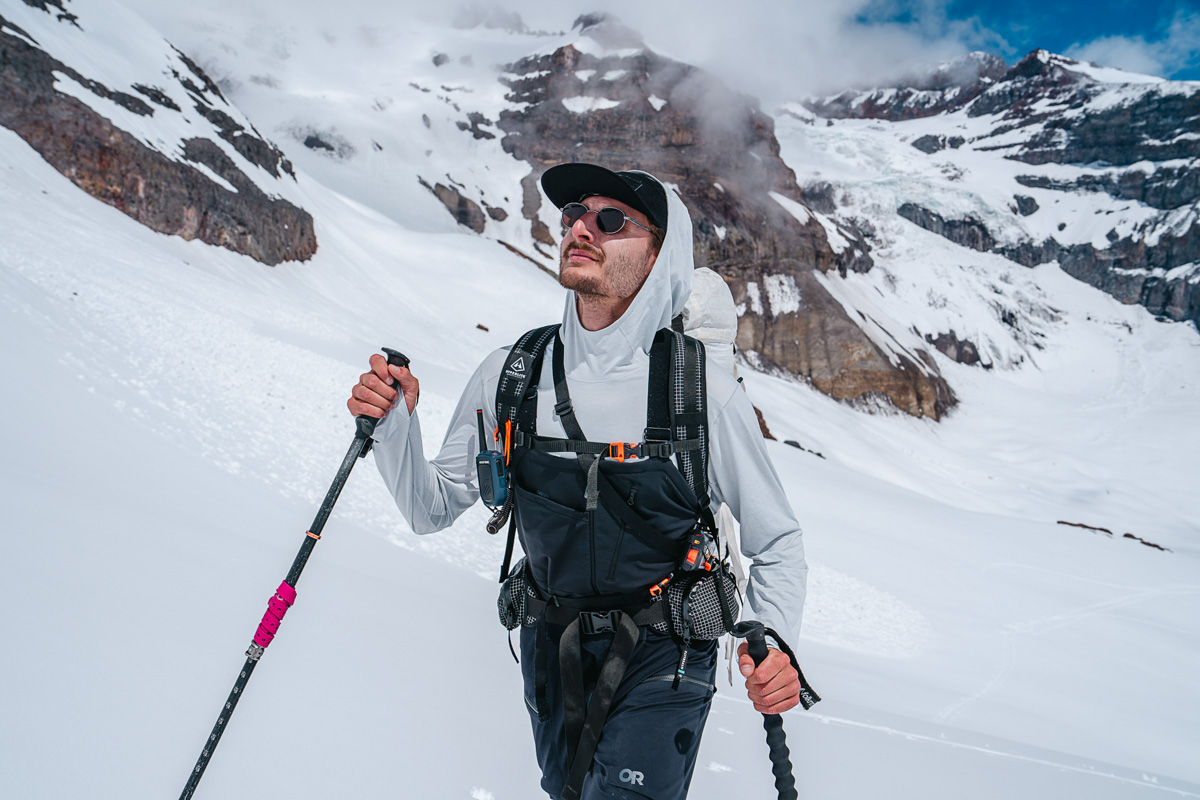
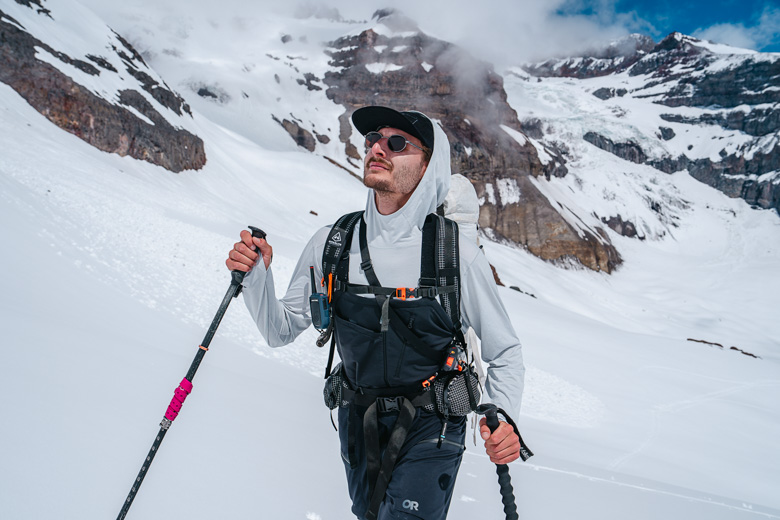
While jackets are certainly a flashier and more exciting layer to shop for, staying comfortable outdoors starts with a quality baselayer. These next-to-skin pieces play a fundamental role in temperature regulation by pulling moisture away from your body and providing a barrier from the cold. They come in a wide variety of styles, from ultra-soft merino options for frigid resort days to breathable synthetics for high-output activities like ski touring. We’ve tested dozens of baselayers over the years while backcountry and resort skiing, winter running, and backpacking, and below are our current 18 favorites for men. For more background information, see our comparison table and buying advice below the picks, along with details about our testing process. For a wider look at the market, we've also put together round-ups of the best women's baselayers and best baselayers, the latter of which covers both men's and women's styles.
Editor’s note: We updated this guide on September 9, 2025, to add the Duckworth Vapor Hoody and Ibex Woolies Pro Tech (replacing the Woolies Tech Long Sleeve, which is no longer available) to our list. We also moved the Ridge Merino Aspect up as our favorite budget merino pick, and rearranged other rankings to align with discoveries made while testing. Finally, we ensured all other information was up to date at the time of publishing.
 Material: 100% merino wool
Material: 100% merino wool
Category: Midweight
Fabric weight: 250g/m²
What we like: Extremely soft, warm, and stink-resistant.
What we don’t: Pricey, too warm for high-output activity, and requires good care to last.
Smartwool has been the industry leader in baselayers for years, and merino wool is the most sought-after material for the job. Made with 100% merino (many of the baselayers below are blends or synthetics), the Classic Thermal is the whole package: It’s warm, super soft against the skin, resists moisture, and doesn’t hold a stink like the polyester options on the list. All in all, it’s a great baselayer for skiing and other winter sports. Based on its popularity, the Classic Thermal is also made in a number of versions, including a Crew and Hoodie. But when active, we appreciate the ability to lower the front zipper and regulate heat.
The Smartwool Classic Thermal is the full package, but merino wool isn’t cheap: You can save with one of the blends or polyester baselayers below, including Patagonia’s popular Capilene. That said, we far prefer merino for its coziness, warmth, and resistance to smell. With polyester, you’ll likely have to wash and change your baselayers quite frequently, whereas wool keeps performance high over the course of a multi-day backcountry or ski trip. The primary downsides to consider are merino’s lack of durability—particularly if you frequently throw it in the dryer—and compromised breathability: In general, merino doesn't dump heat or moisture as well as synthetic materials, which are our preferred choice for high-output activity. But for many, the trade-offs are worth it for the high levels of comfort, warmth, and performance. Among the growing cadre of merino options, we think Smartwool’s Classic Thermal provides the best balance of versatility, quality, and value.
See the Smartwool Classic Thermal 1/4 Zip
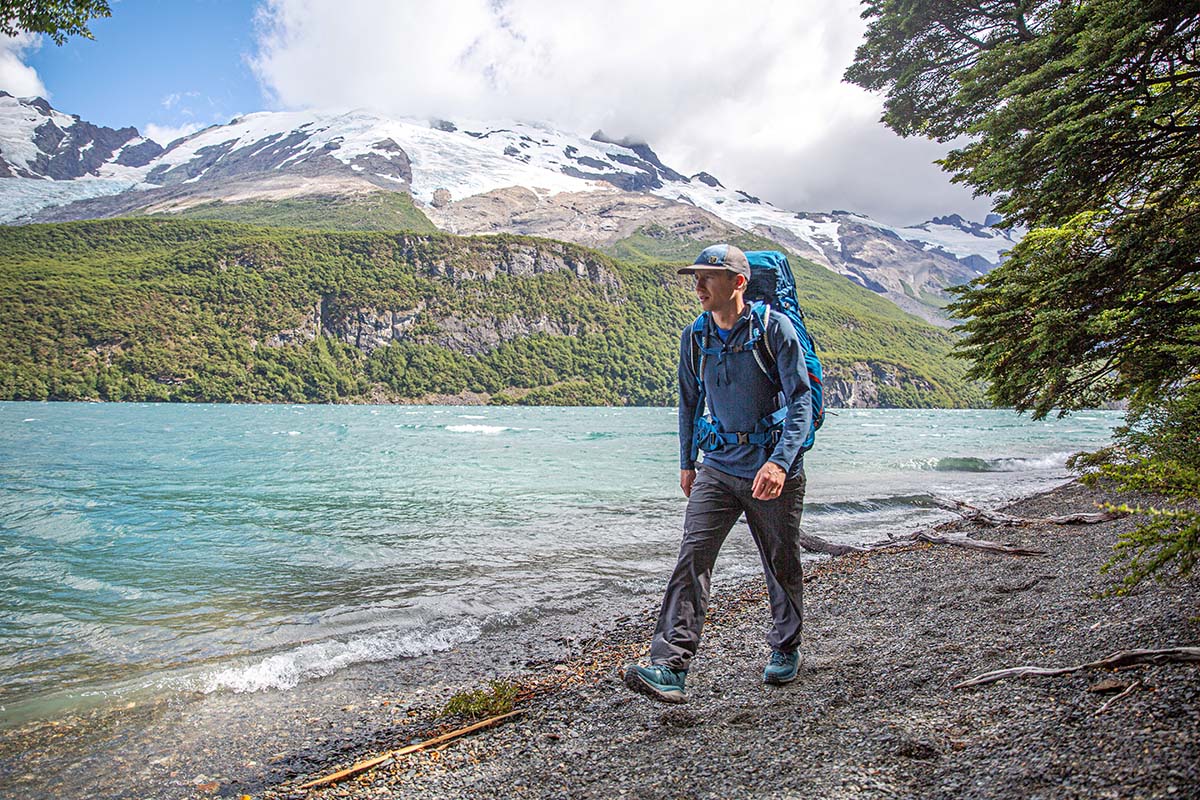
 Material: 100% polyester
Material: 100% polyester
Category: Light/midweight
Fabric weight: 147g/m²
What we like: Cheaper and more durable than merino wool.
What we don’t: Not quite as soft.
Choosing synthetics over merino wool has clear upsides, the most notable being cost, durability, and breathability. For quite a bit less than the Smartwool above, the polyester Capilene Midweight by Patagonia offers similar warmth and steps up the game in terms of moisture-wicking capabilities. And it likely will last for many seasons—we have Capilene tops that are multiple years old and counting, despite heavy use. While synthetics aren't blameless when it comes to their environmental impact (they often rely on fossil fuels for production and can leach plastics into the water with each washing), it helps that Patagonia crafts the Capilene Midweight with 100%-recycled materials.
What do you sacrifice by going with a synthetic baselayer? Polyester is decently comfortable but not as soft against the skin, and it doesn’t regulate body temperature or repel odor quite as well as wool. This doesn’t mean that your Capilene will get stinky super quickly—and Patagonia has made strides in this area with an anti-odor HeiQ Fresh treatment—but you will find yourself putting it through the wash more often. In testing, we also found the cut to be a bit short in our normal size, especially in the sleeves, and the thin elastic at the cuffs seems prone to stretching out of shape over time (although we do like the thumb loops for keeping the sleeves in place when layering). Small gripes aside, Patagonia’s Capilene line is a great alternative for those who find wool too finicky or costly.
See the Patagonia Capilene Midweight Crew

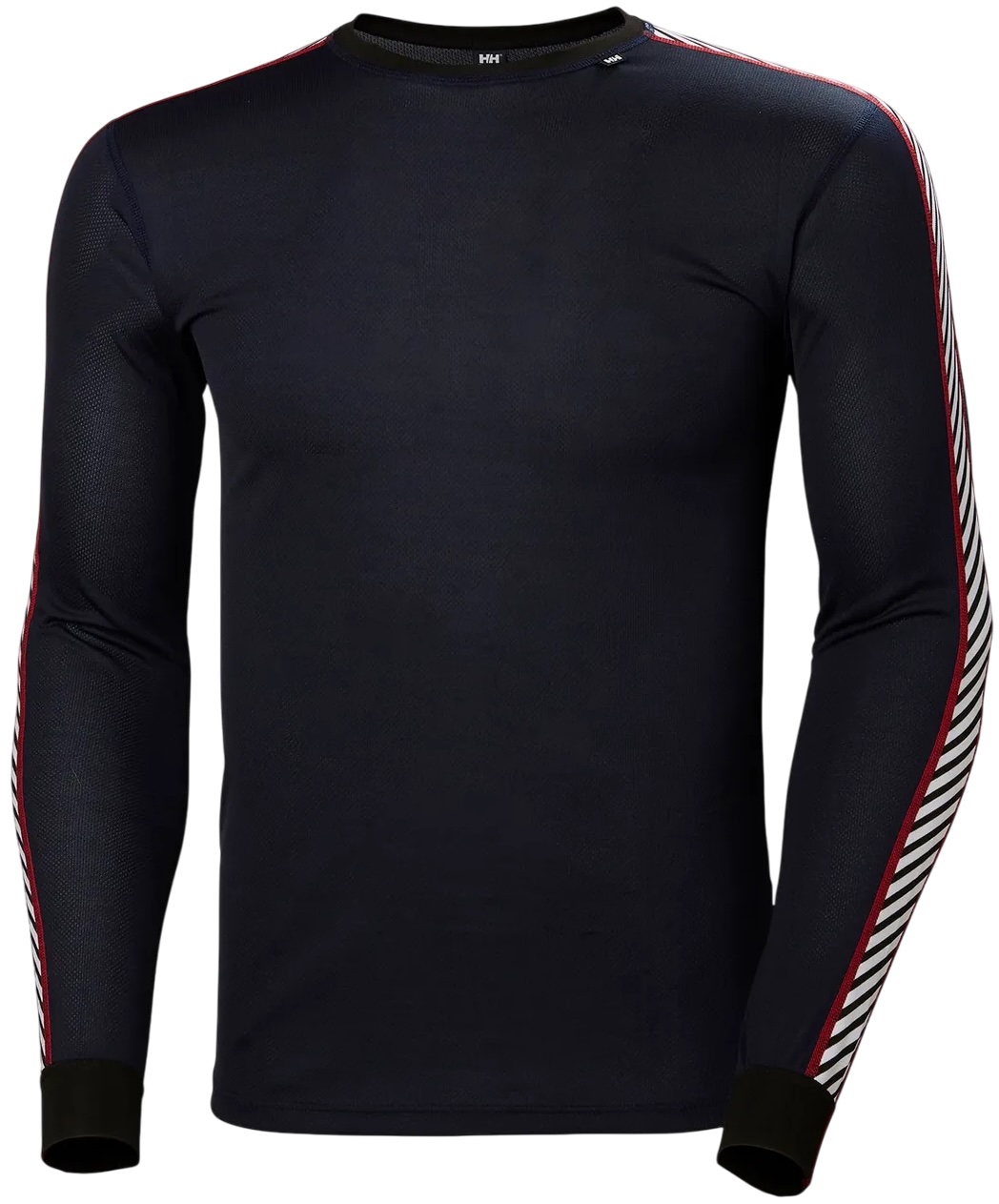 Material: 100% polypropylene
Material: 100% polypropylene
Category: Lightweight
Fabric weight: 125g/m²
What we like: Wicks moisture well and is a great value.
What we don’t: Not as warm as other baselayers in this round-up.
There’s a lot to like about this lightweight active baselayer from Helly Hansen: It’s one of the cheapest options on this list, but it will still keep you dry and decently warm in most conditions. The headliner is the Lifa fabric, which is made from polypropylene and specializes in wicking moisture away from the skin (it does so much better than polyester). In fact, while testing the piece on a spring ski tour on Mount Rainier, we came away very impressed by its balance of breathability and warmth. It even cut the breeze well enough to wear on its own once the sun popped out. What's more, with the long cut and silky fabric, the Lifa Stripe is easy to move in and doesn't bunch up underneath other layers or when bending over to adjust ski boots or bindings. Overall, it's a great high-output option at a hard-to-beat price.
That said, the Lifa Stripe's polypro fabric won't keep you as warm as polyester or nylon alternatives. The design also falls into our lightweight category, meaning it provides some insulation but requires a good midlayer or insulated shell in cold conditions. It’s worth the trade-off for high-output use, but if you prefer warmth over breathability, check out REI’s budget-oriented polyester lineup (including the Lightweight Crew below). Finally, we experienced a few durability issues while testing the Lifa Stripe, including the stitching around the cuffs unraveling after just a few wears. We still consider it a great value, but it's important to be aware of what you sacrifice by saving.
See the Helly Hansen Lifa Stripe Crew
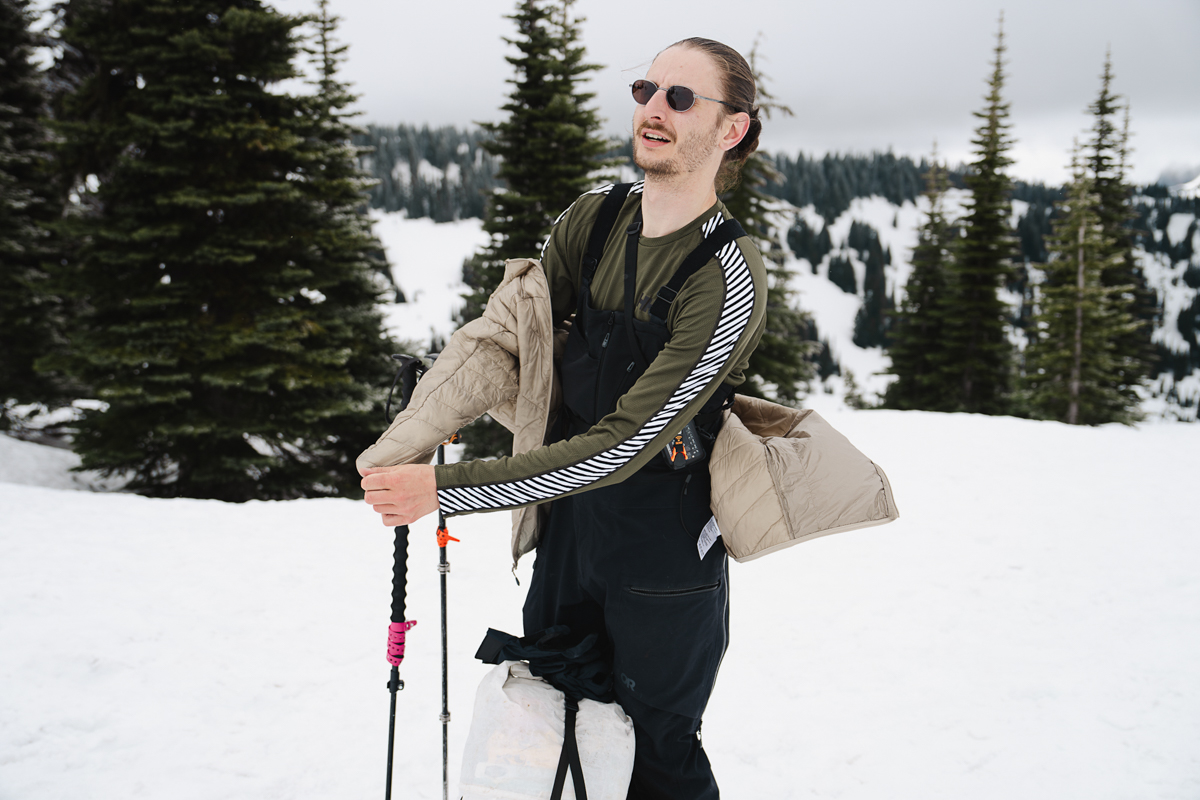
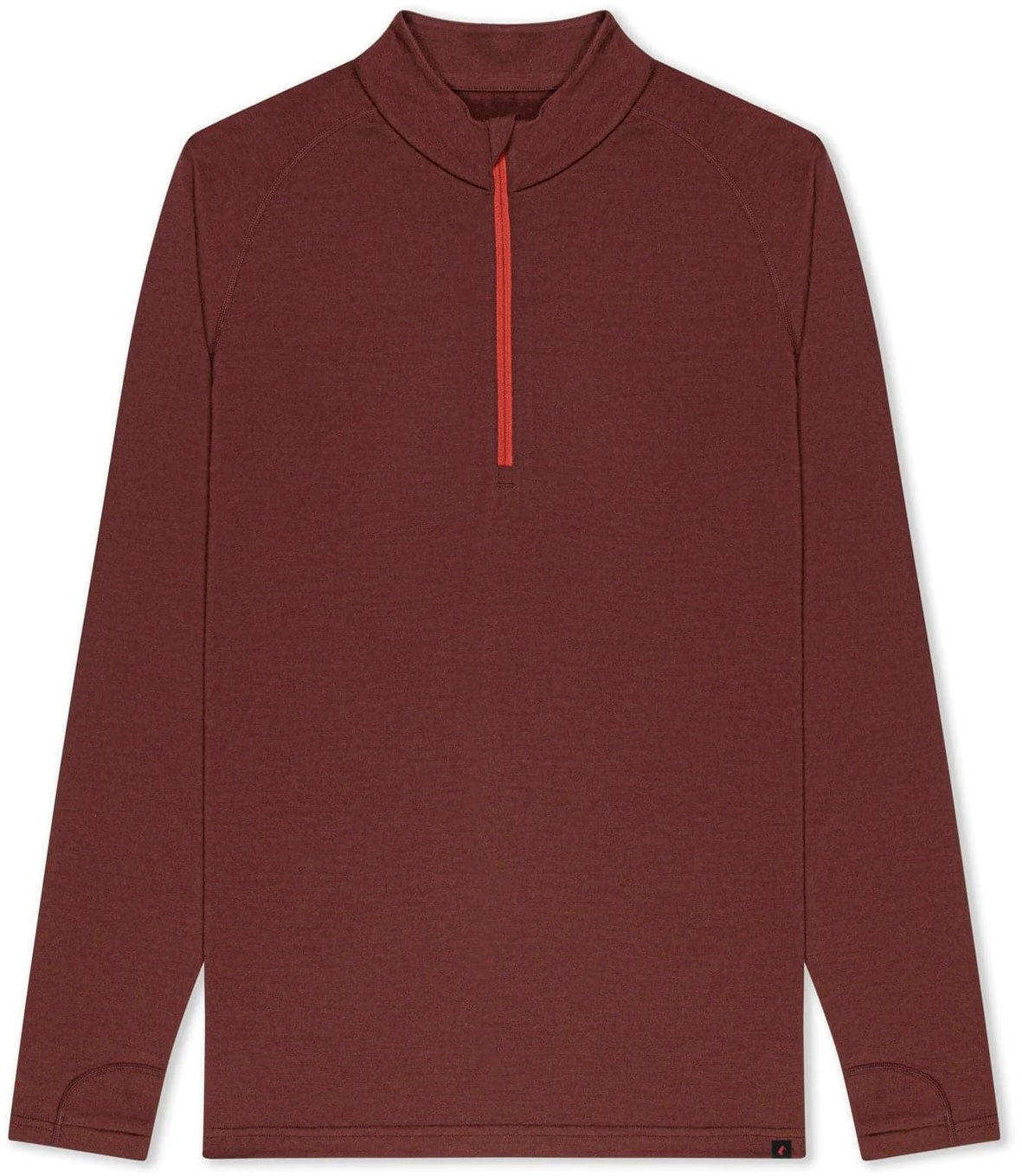 Materials: 84% merino wool, 16% nylon
Materials: 84% merino wool, 16% nylon
Category: Midweight
Fabric weight: 180g/m²
What we like: Fantastic price for a high-quality merino baselayer.
What we don’t: Not the most breathable merino option here.
A family-run operation based out of California’s Eastern Sierra, Ridge Merino offers a small collection of high-quality yet affordable merino wool baselayers. The Aspect Midweight is the best all-rounder in their lineup—its 180g/m² thickness is just right for mild conditions or high-output activities, and it’s so soft and cozy that we can’t help but wear it around the house, too. What’s more, Ridge added a small dose of nylon to the construction, which helps a great deal with durability (we’ve also tested their 100%-merino heavyweight Inversion and found it much more vulnerable to forming holes). To top it all off, the Aspect Quarter Zip is the cheapest merino wool baselayer on this list.
Along with using a really high-quality wool blend, Ridge Merino has also done a great job paying attention to the finer details: The Aspect features well-designed thumb loops that disappear into the cuffs, flatlocked seams for a sleek appearance, and a long cut that doesn’t ride up. What you don’t get is any added ventilation or breathability measures (aside from the zip neck), which cross-country skiers, winter runners, and other endurance or uphill athletes may bemoan (if that's the case, the Smartwool Intraknit above and Icebreaker ZoneKnit below are great alternatives). But added up, we’re very impressed with the Ridge Merino Aspect, which offers a slight step up from Smartwool’s Classic All-Season above in terms of warmth. Note: At the time of publishing, the Aspect Midweight is low on stock, but we expect availability to improve in the coming months.
See the Ridge Aspect Midweight Quarter Zip
 Materials: 53% merino wool, 45% polyester, 2% elastane
Materials: 53% merino wool, 45% polyester, 2% elastane
Category: Midweight
Fabric weight: 250g/m²
What we like: One of just a few merino baselayers that we’ll confidently recommend for high-output use.
What we don’t: Snug fit and techy appearance put it squarely in the performance category.
Smartwool’s Classic Thermal above is a nice match for activities like resort skiing and snowshoeing, but it’s too thick and insulative for high-intensity uses like cross-country skiing or backcountry touring. Enter Smartwool’s Intraknit Thermal, which is purpose-built to keep you comfortable when working up a sweat in cool to cold conditions. Compared to the Classic Thermal’s all-merino build, the Intraknit’s generous use of polyester (45%) translates to a noticeable boost in both breathability and durability, and Smartwool also included mesh ventilation zones in high-heat areas like the upper back and core. But with a good dose of merino, you still get all the benefits of wool, including good odor resistance and a soft-next-to-skin feel.
When deciding between Smartwool’s Classic Thermal above and the Intraknit Thermal here, the main consideration is end use. If you want a more casually minded top to wear both on the slopes and to après, the Classic’s roomier fit and less technical appearance is likely the better choice (we also wear it a lot as an outer layer while hiking or backpacking). On the other hand, the snug-fitting Intraknit is more ideal as a next-to-skin layer for active pursuits and will dump heat much more effectively, although it might look slightly out of place at the ski lodge. All told, we’ve worn the Intraknit for all sorts of heart-pumping winter pursuits—from Nordic skiing to breaking trail in waist-deep powder—and found the balance of warmth and breathability hard to beat. And it’s worth noting that Smartwool also makes the Intraknit Active, a thinner variation that’s best suited for mild conditions.
See the Smartwool Intraknit Thermal Crew
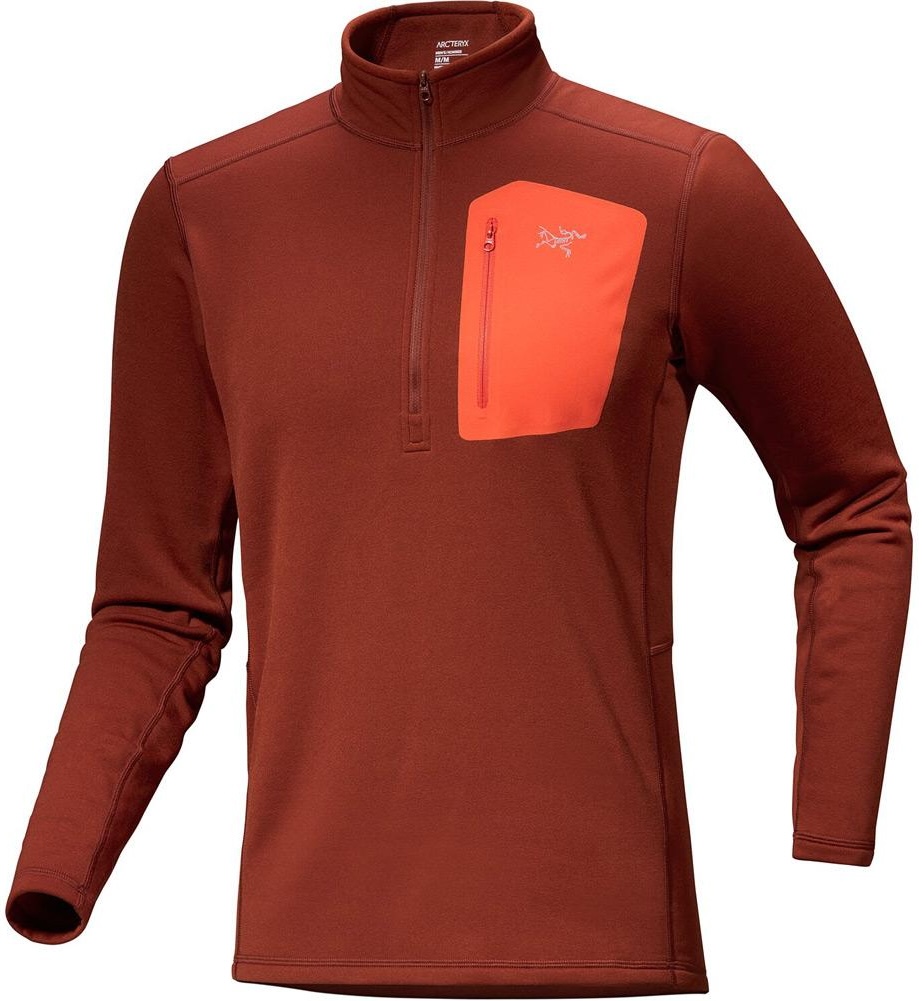 Materials: 53% polyester, 38% nylon, 9% elastane
Materials: 53% polyester, 38% nylon, 9% elastane
Category: Heavyweight
Fabric weight: 241g/m²
What we like: A quality synthetic baselayer for cold conditions.
What we don’t: Expensive; too warm for shoulder-season use.
Arc’teryx places a premium on high performance, which shows in their baselayer collection. Their Rho Heavyweight Zip Neck is tailor-made for regulating body temperature in cold weather, whether you’re moving or standing still. The key here is the Polartec Power Stretch material, which features a fleecy interior that both traps warmth and effectively wicks moisture away from your skin. The material feels like a step up from most polyester/elastane blends: It doesn’t stretch out of shape or retain odor, and it’s perfectly supple and stretchy. Combined with a moderately trim fit that makes it easy to layer overtop (the smooth exterior certainly helps, too), the Rho Heavyweight Zip Neck stands out as a thoughtfully built baselayer for frigid days out.
The Rho Heavyweight toes the line between our baselayer and midlayer categories. The Zip Neck here fits and feels like a baselayer, but the decidedly heavyweight fabric means you’ll want to save it for particularly cold winter conditions or low-output activities (for warmer outings, check out Arc’teryx’s Rho LT lineup). That said, if you’re building any sort of heat, you’ll be grateful for the synthetic material, which wicks moisture better than merino and doesn’t have the same tendency to wet out with sweat—and the deep front zipper can help with ventilation, too. Note: The Rho Heavyweight is tough to find in stock at the time of publishing, but we expect availability to improve in the fall.
See the Arc'teryx Rho Heavyweight Zip Neck
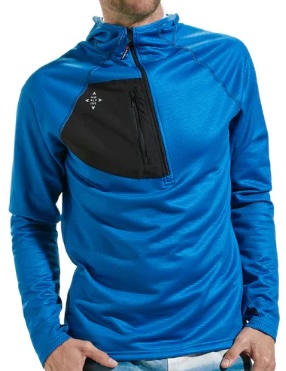 Materials: 93% polyester, 7% spandex
Materials: 93% polyester, 7% spandex
Category: Midweight
Fabric weight: 197g/m²
What we like: Durable enough to be worn as an outer layer.
What we don’t: Expensive for polyester.
NW Alpine certainly isn’t a household name, but this small Portland, Oregon company designs and constructs alpine climbing apparel on par with the best. Although they only make a handful of items, each of their products is a study in quality over quantity. And their Black Spider Hoody is one of our favorite baselayers: It’s comfortable, warm, and breathable, and has unmatched durability. In fact, we’ve put ours through six years of climbing abuse—much of the time without a jacket overtop—and it has yet to develop any holes or tears.
All that said, the Black Spider Hoody won’t earn you too many style points: It lacks the odor resistance of merino and is available in only a few simple colors. Furthermore, it has a hefty price tag for a polyester baselayer, and it can often be hard to find in stock online or in stores. However, the most impressive durability of any baselayer we’ve worn—combined with features like an under-the-helmet hood and chest zip—sets the Black Spider Hoody apart as a highly functional and long-lasting performance piece.
See the NW Alpine Black Spider Hoody

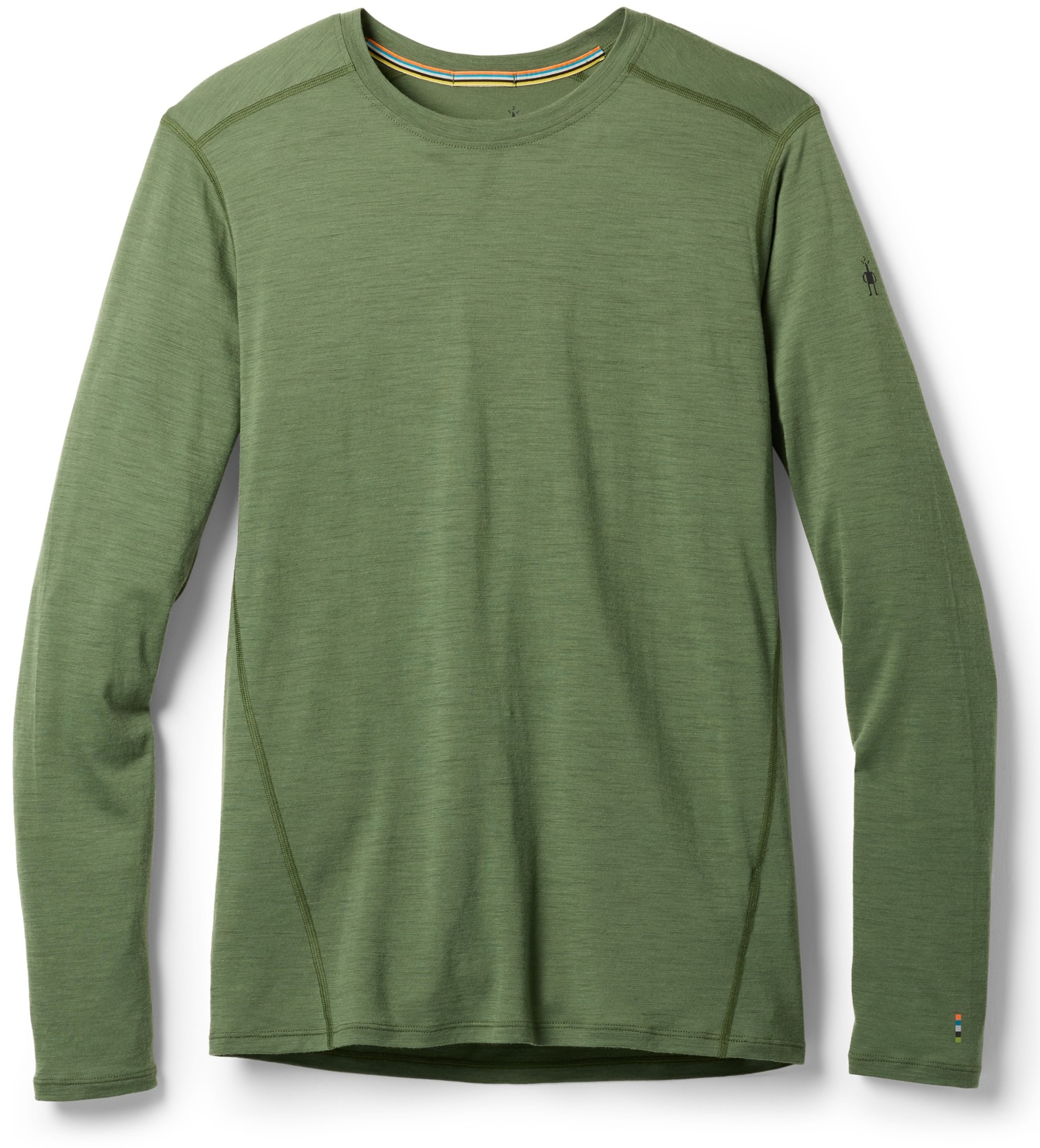 Materials: 88% merino wool, 12% nylon
Materials: 88% merino wool, 12% nylon
Category: Lightweight
Fabric weight: 150g/m²
What we like: A great option for cool days and summer nights.
What we don’t: Thin materials require more care.
We’ve already listed the Smartwool Classic Thermal and Intraknit Thermal in our picks above, but we’d be remiss not to include another stellar baselayer: the Classic All-Season Merino. In contrast to the Classic Thermal 1/4 Zip, the All-Season uses a much thinner fabric, adds nylon to the mix for a boost in durability, and drops the front zipper for a simpler and more streamlined design (it's also available in a 1/4 Zip version). The result is a less insulative yet more breathable and moisture-wicking top, ideal for uses like spring skiing, shoulder-season hiking, and cool summer nights. You’ll feel like you are wearing much less baselayer, but the benefits of merino—coziness, odor resistance, and warmth—are still there.
At 150 grams per square meter (gsm, or g/m²), the Classic All-Season is undeniably thin. For reference, only one other merino baselayer here features the same fabric weight (the Black Diamond Solution 150 below), but it incorporates almost twice as much synthetic material for greater durability (22% polyester compared to the Smartwool's 12% nylon). The risk with thinner blends of merino is early breakdown of the fabric, especially around high-use areas like the cuffs and shoulders—and the Classic All-Season is no exception. But if you're a fan of merino and can accept the potentially shortened lifespan, it's a wonderfully light yet cozy baselayer for summer and mild shoulder-season use.
See the Smartwool Classic All-Season Merino
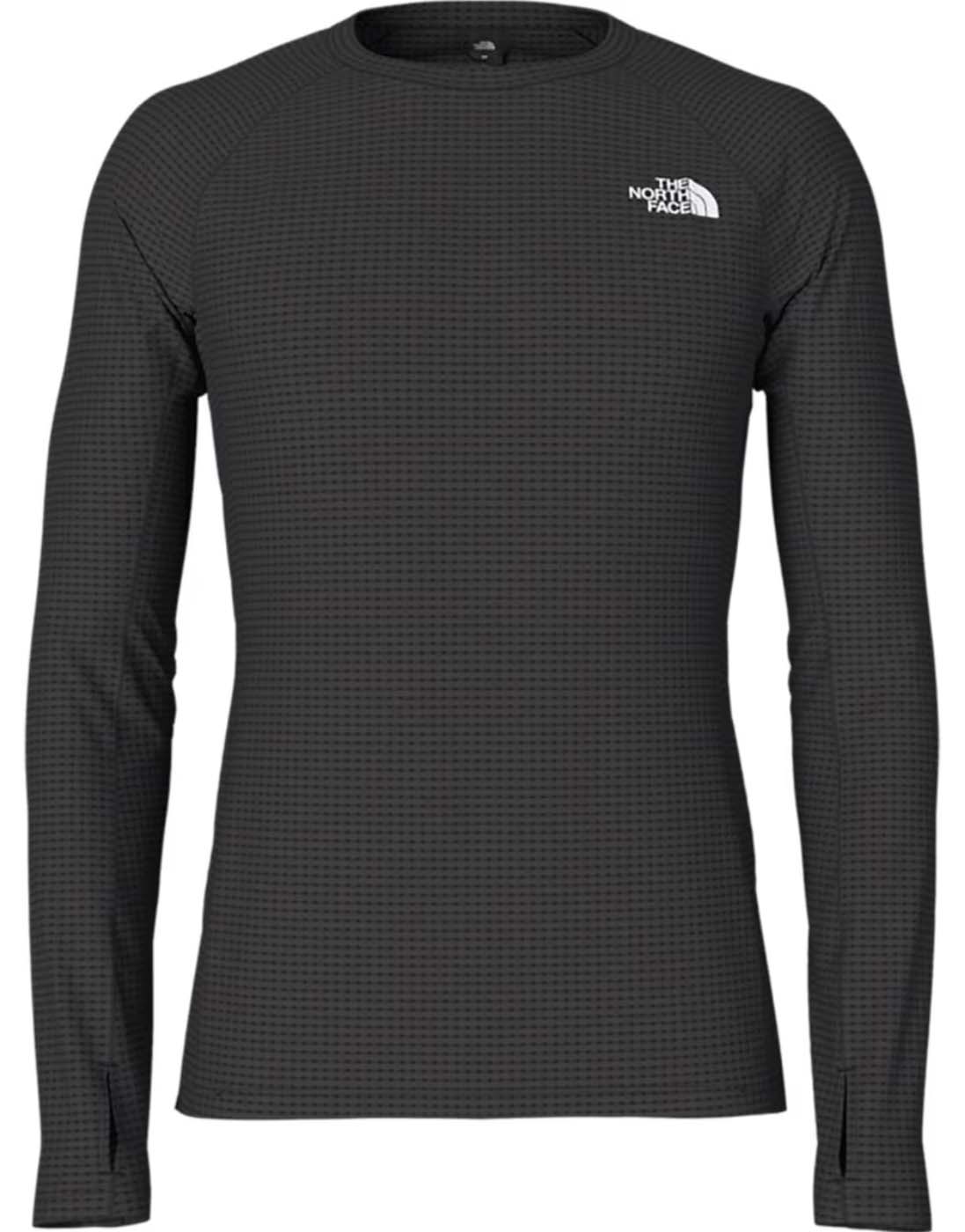 Material: 100% polyester
Material: 100% polyester
Category: Lightweight
Fabric weight: 132g/m²
What we like: Cozy warmth combined with excellent breathability and moisture wicking.
What we don’t: More expensive than the Helly Hansen Lifa Stripe Crew above.
The Patagonia Capilene above is our favorite synthetic baselayer, but you can step up performance a notch with the TNF Summit Series Pro 120 here. The highlight of the 100%-polyester Summit Series Pro is its DotKnit fabric, which features a pattern of small holes that help increase temperature regulation. In practice, we’ve been really impressed by the baselayer’s performance: It provides a surprising amount of warmth but effectively dumps heat and moisture during intense activity—on par with a baselayer like the Smartwool Intraknit Thermal above. What’s more, we found the trim (yet not too snug) fit to be a great match for serious movement.
We rank the Intraknit Thermal as our favorite layer for high-output activity, but the Summit Series Pro 120 isn’t far behind. In fact, it’s our top choice for shoulder-season activities like fall trail running and spring skiing, and we even wore it for an all-night push during a 100-mile race. It’s true that synthetics don’t always measure up to wool in terms of fit, finish, and comfort, but the Summit Series Pro pulls it off better than most: The next-to-skin feel is excellent, and even after a year of consistent use, our shirt has only collected a couple of snags. The high-performance design will cost you more than Helly Hansen's basic Lifa Stripe Crew above, but the extra investment is worth it for those who routinely generate a sweat.
See the TNF Summit Series Pro 120 Crew
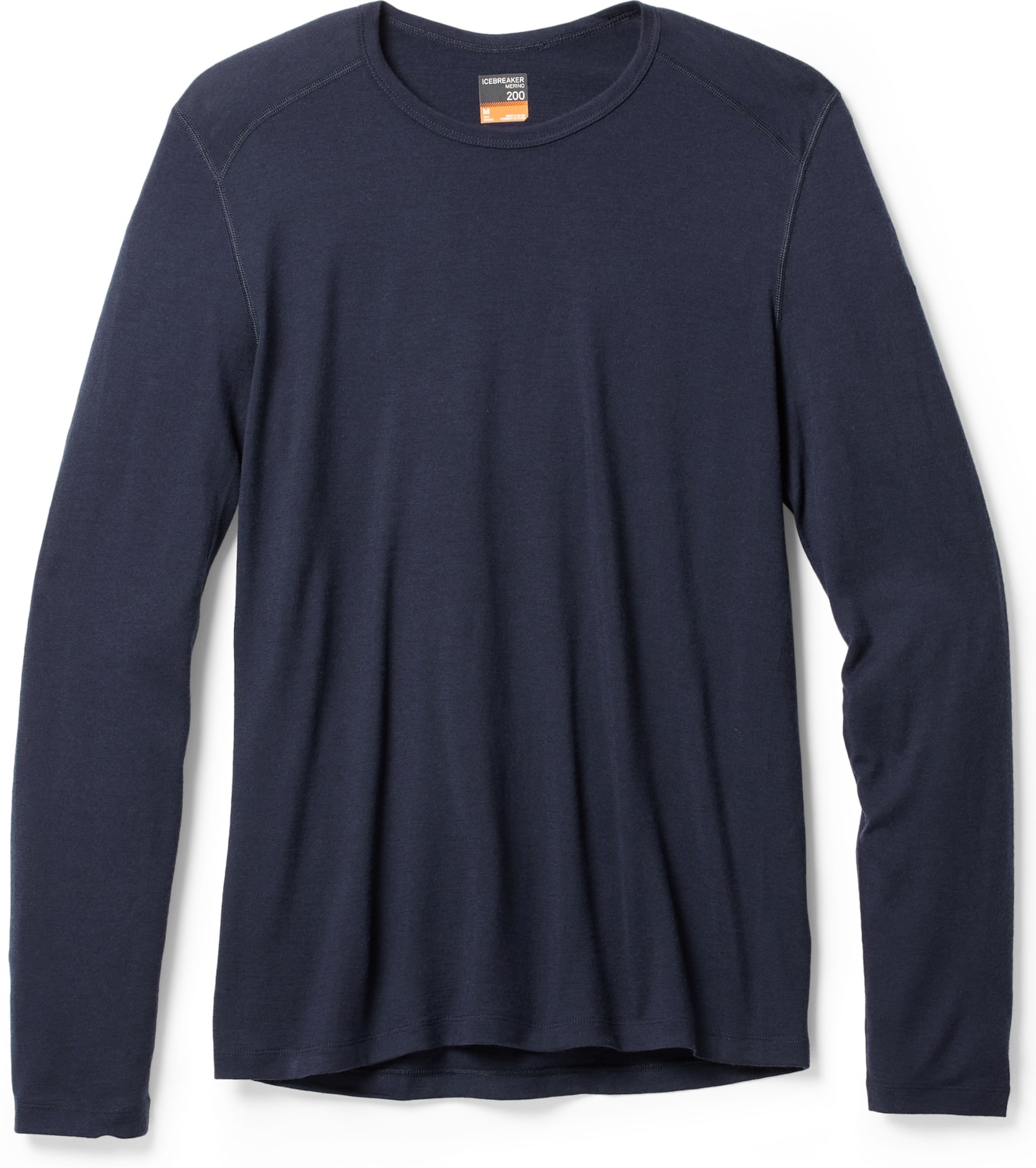 Material: 100% merino wool
Material: 100% merino wool
Category: Midweight
Fabric weight: 200g/m²
What we like: Softer against the skin than Smartwool.
What we don’t: Slim fit and dense weave lag behind in breathability.
Like Smartwool, Icebreaker is a merino wool specialist with a well-earned reputation for quality baselayers, and their Oasis Crew is as versatile as any design on this list. It’s made from 100% merino wool, is super soft, and has a performance fit that works well for everything from skiing to cool-weather hiking. And because of the clean styling and plethora of colorways (plus availability in several different styles), you can easily wear it as a standalone piece, too.
If you’re considering the Oasis, it’s a head-to-head matchup with the Smartwool Classic Thermal above. Both models are made from 100% merino, and the prices are similar (the zip-neck version of the Oasis is cheaper than the quarter-zip Smartwool). Both are comfortable, wick moisture well, and don’t trap odor like synthetics. That said, we give the slight edge to the Smartwool because the dense weave of the Icebreaker’s fabric doesn’t release hot air quite as efficiently. Despite having a lighter fabric weight (200 vs. 250g/m²), it can start to feel muggy when you’re working up a sweat. On the flip side, the Icebreaker wins out in next-to-skin softness, making it the better option for those who prioritize comfort above all else. And if you’re looking to level up in terms of warmth, consider Icebreaker’s 260 Tech, a thicker version of the Oasis here.
See the Icebreaker Merino 200 Oasis Crew
 Materials: 85% merino wool, 15% nylon
Materials: 85% merino wool, 15% nylon
Category: Lightweight
Fabric weight: 125g/m²
What we like: The benefits of merino, plus moisture-wicking and durability.
What we don’t: Can be tough to get your hands on.
Merino wool specialist Ibex may lack the brand recognition of Smartwool, but don’t be fooled—this Colorado-based brand pumps out some very high-quality baselayers. Their Woolies Pro Tech Crew is one of our favorites for its NuYarn weaving technique, which wraps nylon with extra-fine merino fibers for a thread that exudes technical performance down to its literal core. The end result is impressive: Compared to a baselayer like the Smartwool Classic All-Season above, the Woolies Pro Tech is noticeably more durable and dries out very quickly when wet (great news for those who are prone to working up a sweat). The twist-free weave also creates more loft, which gives the Woolies Pro Tech greater thermal retention. And in our opinion, it’s tough to beat Ibex’s attention to detail and material quality—we consistently find their layers softer and better fitting than Smartwool’s.
As is the case with many cottage brands, the Woolies Pro Tech can be tough to find at times. While we’ve had luck finding Ibex products at local gear shops, they aren’t sold through large retailers like REI, which means you won’t get to try them on before buying. What’s more, availability is often low on their site (like at the time of publishing). Complaints aside, Ibex is the real deal, and their sustainability efforts and transparency surrounding production practices only add to their overall appeal. And lastly, know that the Woolies Pro Tech also comes in a quarter zip version, which adds even more versatility.
See the Ibex Woolies Pro Tech Crew
 Materials: 38% merino, 50% polyester, 12% modal
Materials: 38% merino, 50% polyester, 12% modal
Category: Lightweight
Fabric weight: 150g/m²
What we like: Comfortable but technical; quick-drying; very transparent supply chain.
What we don’t: On the pricey end for a mostly synthetic layer.
Duckworth is a relative newcomer to the merino scene and prides themselves on making top-notch merino products—all sourced from a single ranch in Montana’s Beaverhead Valley. The Vapor Hoody is their performance-oriented offering and is a very intentionally built piece. Made with a proprietary blend of merino, polyester, and beech wood pulp, the Vapor combines the great scent-blocking capability of merino alongside a hefty dose of durability and stretch. As a bonus, the layer dries out much quicker than wool-only alternatives. Rounding out the design are practical features including a snug-fitting hood and thumb loops that make it easier to layer overtop (and add some extra hand coverage).
Though few, we have some gripes with the Vapor Hoody. To start, it’s fairly pricey for a mostly synthetic layer, and it won’t have the next-to-skin softness of other merino-heavy layers here, like the slightly cheaper Woolies Pro Tech above. And like Ibex, Duckworth sells almost exclusively through their own site, which makes it tough to try this one on before purchasing. Duckworth makes up for the hefty price tag with their generous loyalty program, which earns you points for shopping and interacting with the brand on social media. As a final plus, Duckworth sources and produces all of their wool products in the U.S., and you can read more about their merino flock on their site.
See the Duckworth Vapor Hoody
 Material: 100% polyester
Material: 100% polyester
Category: Lightweight
What we like: A lightweight, free-flowing, and breathable top for mild conditions and high-output activity.
What we don’t: Not as soft or odor-resistant as merino; material is prone to pilling and snagging.
The Smartwool Intraknit Thermal above is our top pick for high-output use in cool to cold conditions, but for shoulder-season and even summertime use, we turn to Outdoor Research’s thinner Echo Hoodie. For reference, the popular Echo collection features free-flowing polyester in a number of different styles including a tank, short-sleeve shirt, crew and quarter-zip tops, and the Hoodie here. The Hoodie stands apart for its versatility: Wear it as a breathable baselayer on a high-output spring ski tour, as a winter running shirt, or as a sun hoody for bluebird days on the rock. Whatever your use, the hood is a really nice addition that extends the Echo’s warmth, coverage, and sun protection above the neck.
The Echo is an incredibly breathable baselayer and one of our go-to sun shirts, but it does have a few shortcomings. The fabric is prone to pilling, snags easily, and lacks the soft next-to-skin feel of merino offerings like the Smartwool Classic and Ridge Merino Aspect above. And despite Outdoor Research’s use of ActiveFresh Odor Control, the Echo is known to hold onto stink. Finally, in terms of sun protection, it has a lower UPF rating than most sun shirts (15 to 20, depending on color). But gripes aside, the Echo manages moisture better than most offerings here, making it one of our favorite baselayers for mild conditions or high-output activity in any season.
See the Outdoor Research Echo Hoodie
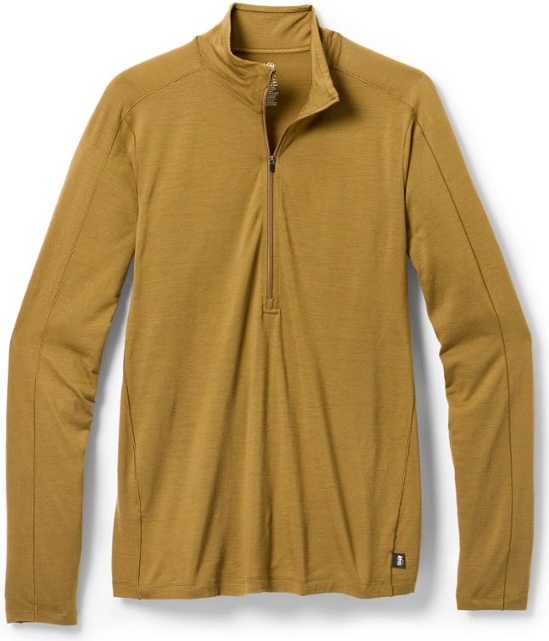 Material: 100% merino wool
Material: 100% merino wool
Category: Midweight
Fabric weight: 185g/m²
What we like: A soft, stretchy, and well-made baselayer.
What we don’t: Pricey for an REI product.
Of all of REI Co-op’s in-house products, their merino baselayer is one of our favorites. It’s right on the same playing field as heavy hitters like Smartwool and Icebreaker, which is quite a feat given that those companies specialize in wool layering pieces. The Co-op updated their Merino Midweight Half-Zip design (200g/m²) to the Merino 185. It drops a little warmth with the thinner construction, but like its predecessor, the Merino 185 is soft, has a good amount of stretch, and wicks moisture effectively. And most importantly, it can handle everything from backpacking to cross-country skiing with ease.
Unlike many REI products, the Merino 185 Half-Zip doesn’t come at much of a discount, which is why we have it ranked here. The 185g/m² thickness is a noticeable step down in warmth from Icebreaker's popular Merino 200 Oasis Crew above, although you do get a front zip and higher collar on the REI. And for a bit more, you can get the legendary Smartwool Classic Thermal above, our top pick, which is slightly thicker and much warmer at 250g/m². We really like the REI and have had nothing but positive experiences with it thus far, but we’re not ready to dethrone the Smartwool just yet.
See the REI Co-op Merino 185 Half-Zip
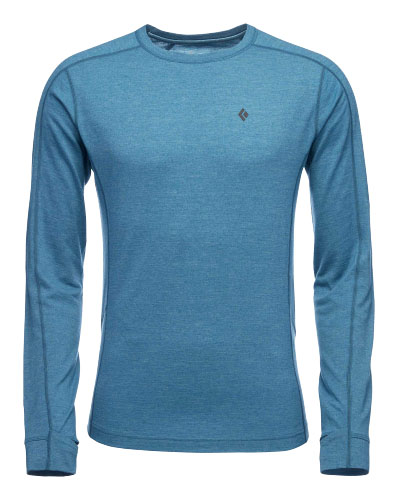 Materials: 78% merino, 22% polyester
Materials: 78% merino, 22% polyester
Category: Lightweight
Fabric weight: 150g/m²
What we like: A slightly thicker NuYarn top than the Woolies Pro Tech above.
What we don’t: More expensive than the Woolies Pro Tech and uses less Merino.
Like Ibex’s Woolies Pro Tech above, Black Diamond’s Solution Wool lineup uses NuYarn’s innovative weaving technique, and the Solution 150 here is one of our favorites for its durability and ability to dry quickly when wet. We tested the Solution for six days straight while hiking in Patagonia, and came away impressed with how well it held its shape and resisted odor. Under a loaded backpack, the offset shoulder stitching was comfortable and mitigated pressure points, and the thumb loops are sleek and well constructed. It’s also slightly thicker than the Woolies Pro Tech above, which gives it a stronger slant for mid winter activities.
Why do we rank it below the Woolies Pro Tech, then? The higher price tag is the biggest argument, especially considering the Solution has a lower wool-to-synthetic ratio than the Ibex (78% wool vs. 85% for the Woolies Pro Tech). We also have to give the nod to Ibex for their stronger efforts in sustainability and ethical production—the Solution 150 doesn’t adhere to the Responsible Wool Standard (RWS), for example. That said, if you can’t get your hands on the Woolies Pro Tech, the Solution 150 isn’t a bad compromise, and we’re still impressed by its all-around performance in comparison with other baselayers on this list.
See the BD Solution 150 Merino Crew
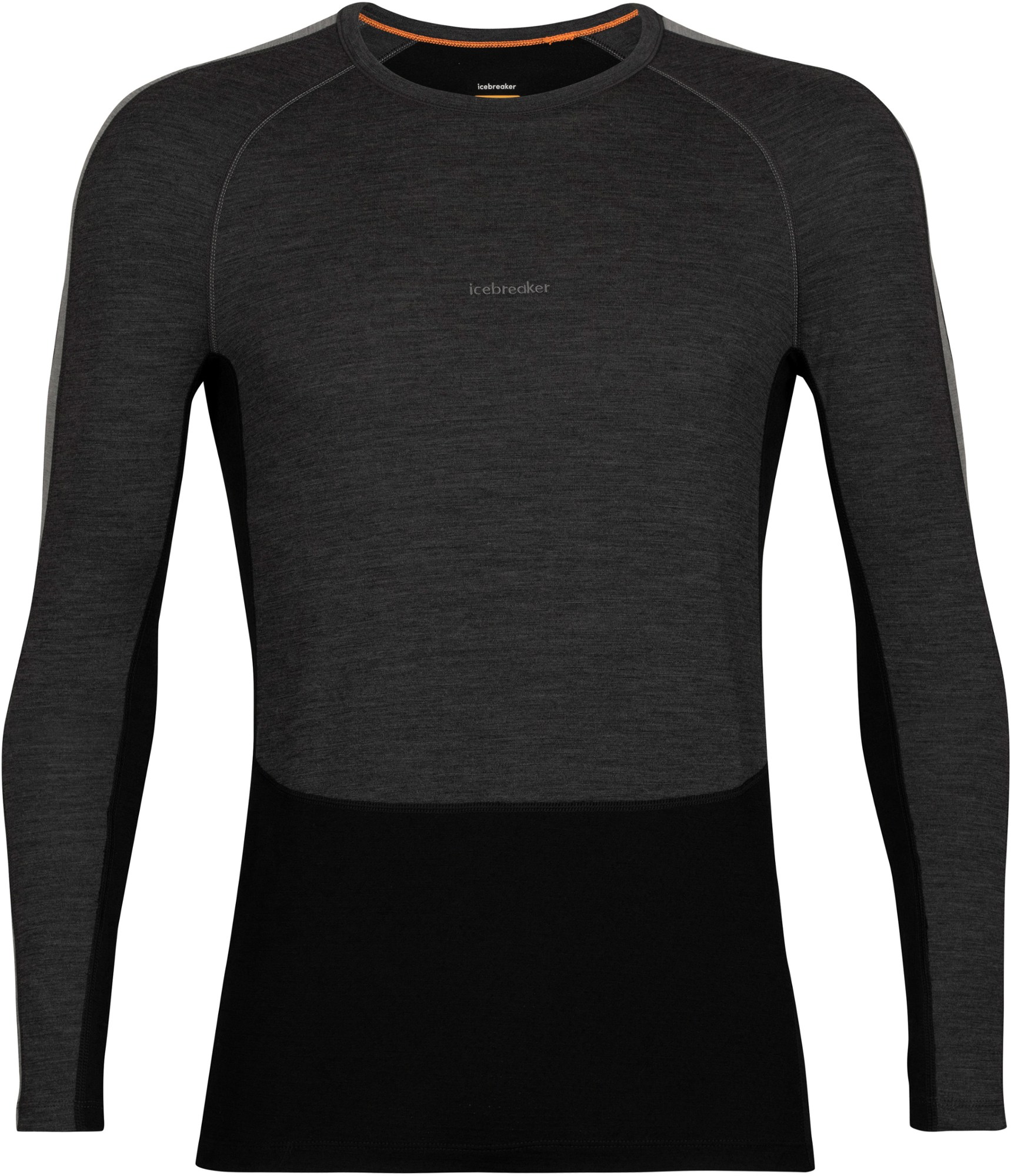 Material: 100% merino wool
Material: 100% merino wool
Category: Midweight
Fabric weight: 200g/m²
What we like: Competitive mix of warmth and breathability for working hard in cold weather.
What we don’t: Pricier than the Smartwool Intraknit above without enough to show for it.
If Smartwool’s Intraknit Thermal above caught your eye, it’s also worth considering Icebreaker’s similarly intentioned 200 ZoneKnit Crew. Like the Smartwool, the Icebreaker is a midweight design intended for working hard in cold weather but trades the Intraknit’s partial-wool build for 100% merino. This translates to a boost in comfort and odor resistance, and you also get thumb loops (which the Smartwool lacks) for more easily layering overtop. And Icebreaker didn’t skimp on the smaller details, including gusseted underarms for maximizing mobility, flatlock seams to minimize chafing underneath pack straps, and a drop tail hem for added coverage (and less riding up) when sitting down or bending over.
Why do we rank the Smartwool Intraknit above the Icebreaker ZoneKnit? While the all-merino build is great for next-to-skin comfort and stink prevention, it’s a step down from the Smartwool’s merino/polyester/elastane blend in terms of moisture wicking and durability. Although subjective, we’re not big fans of the ZoneKnit’s styling, either: The Icebreaker logo is positioned front and center, the stripes down the sides of each arm give the design a fairly technical look, and there’s an awkward seam running across the middle of the torso. A final clincher is the higher price, which we don’t feel is warranted given the downsides outlined above. But if you can score the ZoneKnit at a discount or simply prefer the all-merino construction, it’s another capable option for high-output use in the winter months. Note: The ZoneKnit is low on stock at the time of publishing, but can be found at a discount while supplies last.
See the Icebreaker 200 ZoneKnit Crew
 Materials: 92% polyester, 8% spandex jersey
Materials: 92% polyester, 8% spandex jersey
Category: Lightweight
Fabric weight: 129g/m²
What we like: Lightweight and breathable but still very cozy.
What we don’t: Pricier than most synthetic competitors; roomy fit and kangaroo pocket aren’t ideal for performance use.
The second option from Patagonia’s popular Capilene collection to make our list this season is the Capilene Thermal Hoody. Right off the bat, we’ll note that the “thermal” designation is a bit of a misnomer: The synthetic build is super lightweight—at 129g/m², it’s one of the lightest materials here and noticeably more breathable than merino alternatives. For reference, we wore the crew-neck version of the Capilene Thermal on a one-day ascent of Washington’s Mount Stuart in June and managed to stay comfortable throughout the entire push. And it doesn’t get much more comfortable: The Polartec Power Grid fabric’s open-grid weave has a really supple and soft next-to-skin feel.
All that said, the Capilene Thermal lags behind many synthetic competitors in long-term durability. Most notably, we experienced considerable pilling around the cuffs, which is largely cosmetic but nevertheless worth considering given the steep price tag. On the bright side, the fabric is good at resisting tears and holes, and the offset shoulder seams help minimize wear and chafing underneath pack straps. We also love the accommodating fit, low-profile hood, and kangaroo pocket, which add a nice dose of style for casual and around-town use. It’s true that the Capilene Thermal is one of the priciest synthetic designs on our list and less performance-ready than many of the picks above (the crew and zip-neck versions forgo the kangaroo pocket), but the combination of comfort, breathability, and everyday-friendly looks is enough to earn it a spot on our list.
See the Patagonia Capilene Thermal Hoody
 Materials: 94% polyester, 6% spandex
Materials: 94% polyester, 6% spandex
Category: Lightweight
Fabric weight: 150g/m²
What we like: Simple yet functional.
What we don’t: Not super comfortable or a high performer.
In terms of bang for your buck, it’s hard to top REI baselayers. For a relatively low price, the Lightweight Crew offers most of the performance of the more expensive options above in a simple yet functional design. Additionally, REI honed things in even further with 8% spandex in the construction, which gives it a nice, stretchy feel. Paired with the matching bottoms, you can pick up a full long underwear set for a price lower than most tops here.
What are the downsides of the REI? We’ve found the lightweight model works well for mild resort skiing days, hiking, and casual use, but you may not be warm enough in frigid temperatures. Of note, REI does offer a warmer version (the Midweight Long Sleeve) for a bit more. And although the Co-op’s fabric is comfortably silky, it can’t compete with merino or even Patagonia’s Capilene in terms of softness and comfort (and it’s even more prone to holding onto body odor). These issues aside, the REI Lightweight (or Midweight) Crew is a good way to kit yourself out this winter on a budget.
See the REI Co-op Lightweight Crew
| Baselayer | Price | Materials | Category | g/m² | Weight |
|---|---|---|---|---|---|
| Smartwool Classic Thermal | $120 | 100% merino wool | Midweight | 250 | 10.5 oz. |
| Patagonia Capilene Midweight | $89 | 100% polyester | Light/mid | 147 | 6.2 oz. |
| Helly Hansen Lifa Stripe Crew | $45 | 100% polypropylene | Lightweight | 125 | 5.3 oz. |
| Ridge Merino Aspect Midweight | $79 | 84% merino wool, 16% nylon | Midweight | 180 | 8.3 oz. |
| Smartwool Intraknit Thermal | $130 | 53% merino, 45% polyester, 2% elastane | Midweight | 250 | 7.3 oz. |
| Arc'teryx Rho Heavyweight | $140 | 53% polyester, 38% nylon, 9% elastane | Heavyweight | 241 | 10.1 oz. |
| NW Alpine Black Spider Hoody | $135 | 93% polyester, 7% spandex | Midweight | 197 | 11.0 oz. |
| Smartwool Classic All-Season | $90 | 88% merino wool, 12% nylon | Lightweight | 150 | 6.0 oz. |
| The North Face Summit Pro 120 | $90 | 100% polyester | Lightweight | 132 | 6.7 oz. |
| Icebreaker Merino 200 Oasis | $105 | 100% merino wool | Midweight | 200 | 7.6 oz. |
| Ibex Woolies Pro Tech Crew | $115 | 85% merino wool, 15% nylon | Lightweight | 125 | 8.1 oz. |
| Duckworth Vapor Hoody | $119 | 38% merino, 50% polyester, 12% modal | Lightweight | 150 | 6.2 oz. |
| Outdoor Research Echo Hoodie | $75 | 100% polyester | Lightweight | Unavail. | 5.3 oz. |
| REI Co-op Merino 185 Half-Zip | $90 | 100% merino wool | Midweight | 185 | 8.5 oz. |
| Black Diamond Solution 150 | $135 | 78% merino, 22% polyester | Lightweight | 150 | 6.7 oz. |
| Icebreaker 200 ZoneKnit Crew | $150 | 100% merino wool | Midweight | 200 | 8.8 oz. |
| Patagonia Capilene Thermal | $139 | 92% polyester, 8% spandex jersey | Lightweight | 129 | 8.6 oz. |
| REI Co-op Lightweight Crew | $40 | 94% polyester, 6% spandex | Lightweight | 150 | 6.4 oz. |
Whether we’re headed out for a backcountry ski tour, backpacking trip, or shoulder-season climbing objective, our layering system always starts with a quality baselayer. Former editor-in-chief John Ellings kicked off our baselayer coverage in 2015, hand-picking our initial lineup of eight quality options. Since then, we've split the guide into three separate articles to distinguish between men's baselayers (covered above), women's baselayers, and unisex baselayers (this final round-up covers both men's and women's styles). Editor Maddie Downie currently manages our coverage with input from the men on our team. Based in Washington state, Maddie is a dedicated backcountry skier and climber who spends much of her time romping around the North Cascades. In addition to our own rigorous testing, we incorporate feedback from longtime contributors and the broader outdoor community to ensure our recommendations reflect the best options available.
When compiling the list above, we took into account our own experiences on the trail, on the slopes, and everywhere in between. To gauge performance, we look closely at warmth, taking note of how cozy each baselayer keeps us in a range of temperatures and conditions. We also pay attention to breathability and moisture-wicking capabilities as we pick up the pace, take note of overall comfort and softness against our skin, and document how frequently each baselayer requires washing to get rid of stink. Of course, we're also sure to make note of how each baselayer holds up over time, looking for signs of deterioration like pilling, tears, and snags. Since the market is constantly evolving, we're always on the lookout for new models to test and include in our coverage, so keep an eye out for changes to our picks above.
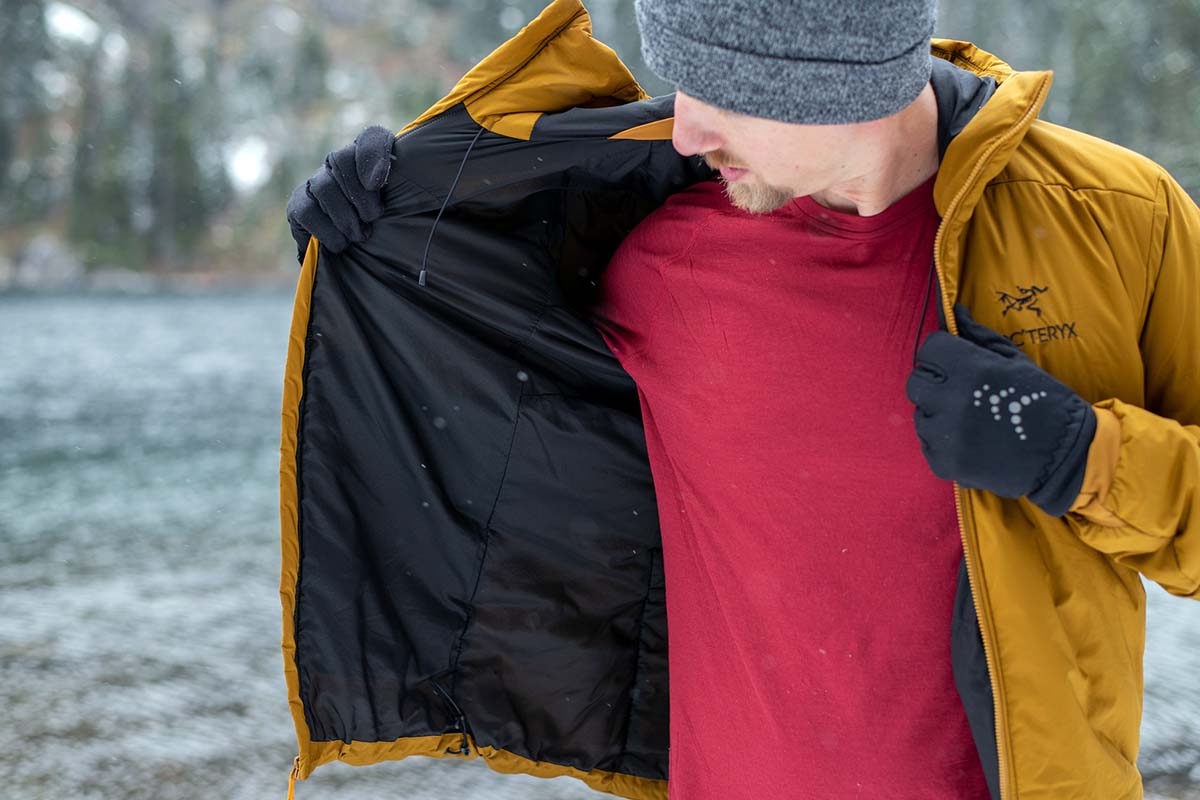
Merino Wool
Merino wool is our favorite baselayer material for winter use: It’s ultra-soft and incredibly warm for the weight, offers great temperature regulation, and resists odor far better than synthetic materials. For a warm and cozy next-to-skin layer that doesn’t clam up, it’s a great choice. However, merino wool baselayers are less durable than the synthetic competition, especially thin varieties or those that aren’t blended with other materials like polyester or nylon. They’re also too warm for mild conditions and intense activity like ski touring, running, and nordic skiing, and absorb sweat more than synthetics (which isn’t great news once you cool down). But for mellow days out or if you really prefer the feel of natural material, merino has a lot to offer. For more information about its pros and cons, check out our article: Merino Wool: Is It Worth It?
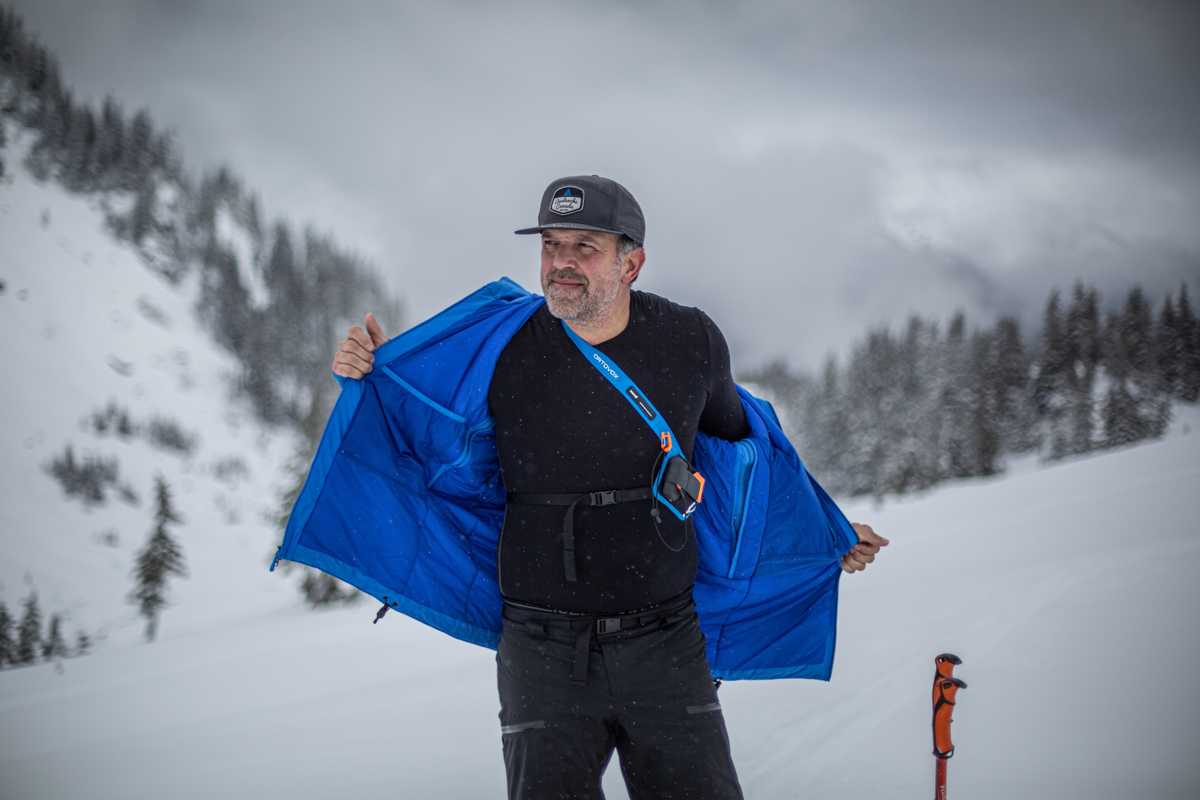
Synthetics
Synthetic materials like nylon and polyester are a cost-effective alternative to merino and excel in terms of moisture-wicking and durability. For shoulder-season conditions, high-output activities, or use as an outer layer (as in the case of a layer like the NW Alpine Spider Hoody), they’re our first choice. The largest downside to synthetics is stink build-up: Despite efforts from manufacturers, odor-resistant polyesters and nylons still can’t compete with the natural benefits of merino (although they are improving). In addition, synthetics don’t provide as much warmth for the weight and, as such, are not our first choice in truly frigid conditions or for low-intensity activity. It’s also worth noting that they range a great deal in terms of quality: The Arc'teryx Rho Heavyweight and TNF Summit Series Pro 120 use really high-end polyester material, while the Patagonia Capilene series is more prone to pilling and snagging.
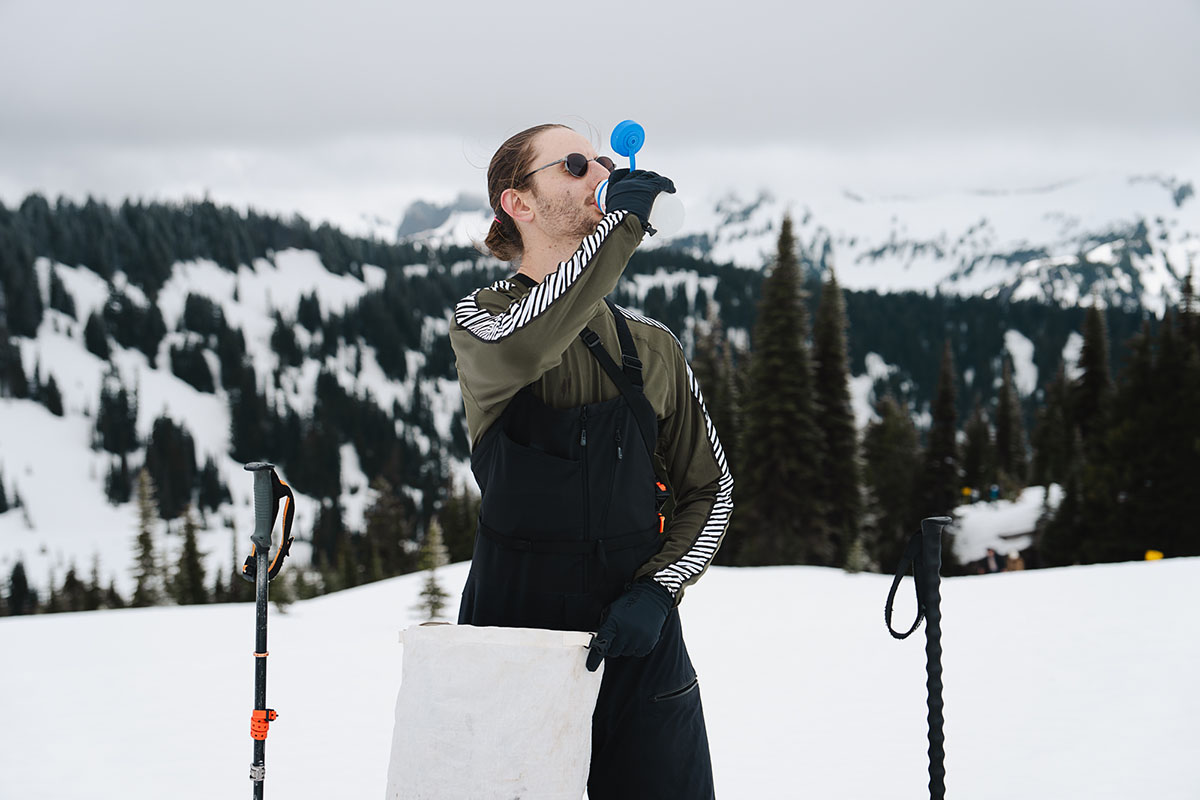
Blends
It’s not quite as simple as deciding between an all-merino or all-synthetic baselayer. Blends have become a trusted way to combine the comfort and odor resistance of merino wool with the durability and moisture-wicking capabilities of polyester/nylon. It's common to see lightweight merino blended with synthetic fibers, as in the case of the Smartwool Classic All-Season (88% merino, 12% nylon)—this is purely for the sake of durability, as thin merino (under around 200g/m²) is more prone to forming holes. On the other hand, many of our favorite active baselayers, like the Smartwool Intraknit Thermal Merino Crew, mix in synthetic fibers for added breathability and moisture wicking. We'll stick with 100% merino when comfort is the top priority and 100% polyester when it's breathability or bust, but for the best of both worlds, blends have a lot to offer.
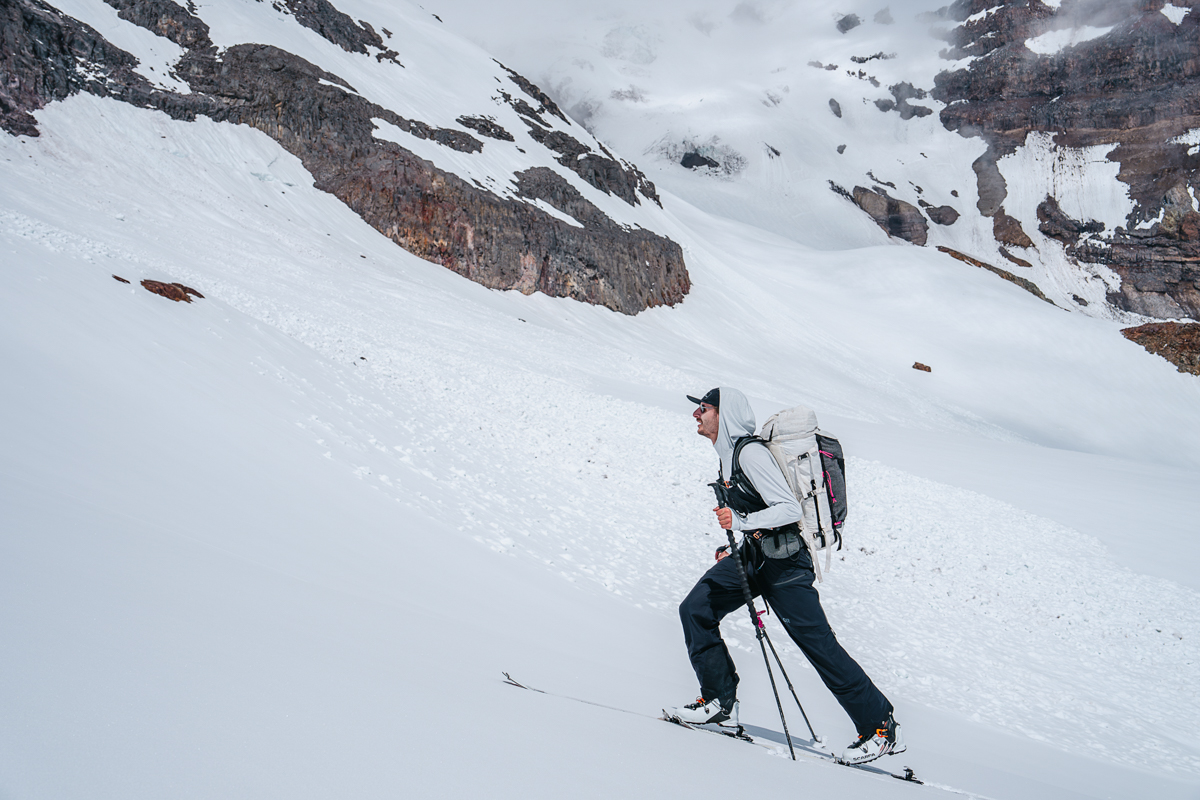
Breathability
The breathability of a baselayer is dependent on a number of factors, including the type and quality of the fabric, thickness, and openness of the weave. In general, lightweight merino and synthetic baselayers offer better breathability than heavier-weight offerings. But between the two materials, synthetics are by far the more breathable choice: While merino does a great job pulling moisture away from your skin, it has a tendency to hold onto it—and on a cold day, a wet baselayer is never good, even if it continues to insulate (as wool does when wet). We’ve also found that merino is simply too warm for most intense activities. As a result, synthetic baselayers, like The North Face's Summit Series Pro 120 and the lightweight version of the Arc'teryx Rho, are our preferred choice for mild conditions or when we anticipate building a sweat (think ski touring, Nordic skiing, and running). There are also a few blends that stand out in terms of breathability, including Smartwool's Intraknit Thermal and Intraknit Active.
Polyester: Excellent
Blends: Very good
Merino: Good
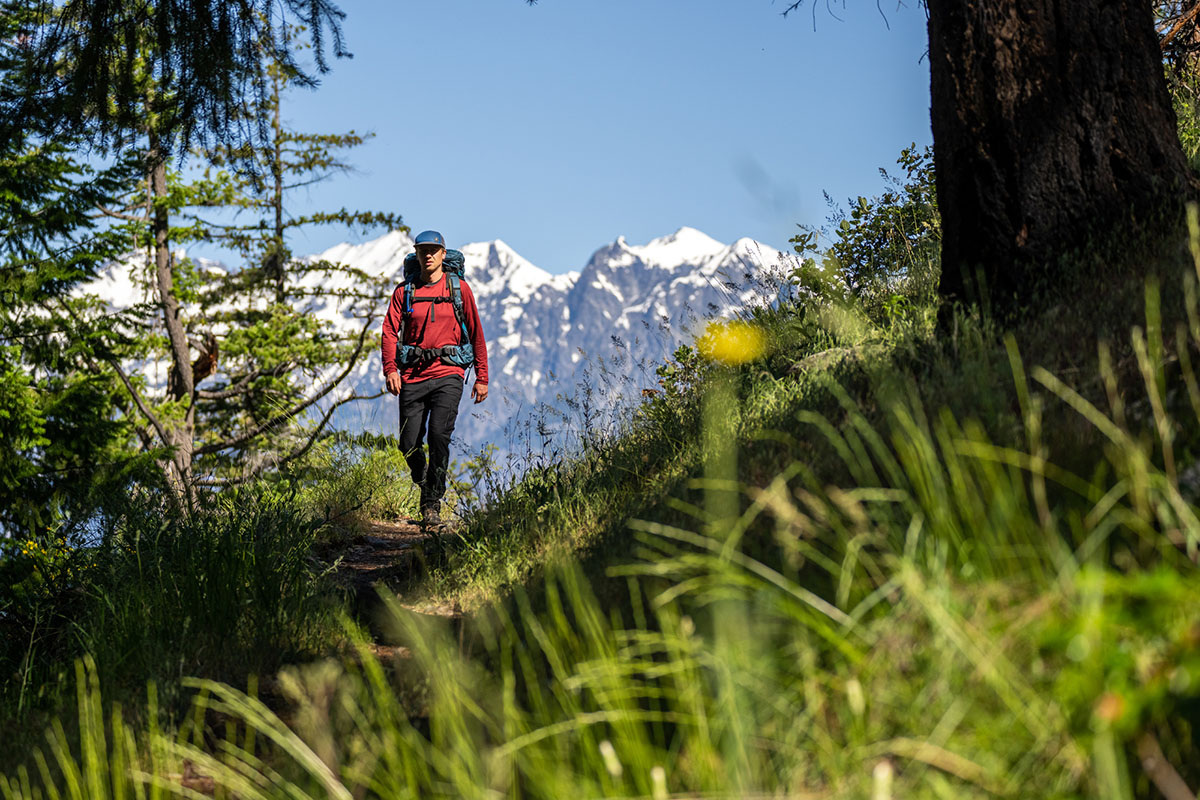
Odor Prevention
Merino wool excels at pulling moisture away from your skin, and less sweat buildup means less stink buildup. If you’re taking an extended backcountry trip and don’t want to carry multiple baselayers or rinse them each night, merino is the way to go. Some synthetics do fine for odor prevention, provided you aren’t working up a huge sweat. For example, we’ve hiked for extended periods in Patagonia’s Capilene Midweight in cool weather and have been impressed with its odor resistance. But nothing beats merino in keeping you dry and stink-free.
Merino: Very good
Blends: Good
Polyester: Not good
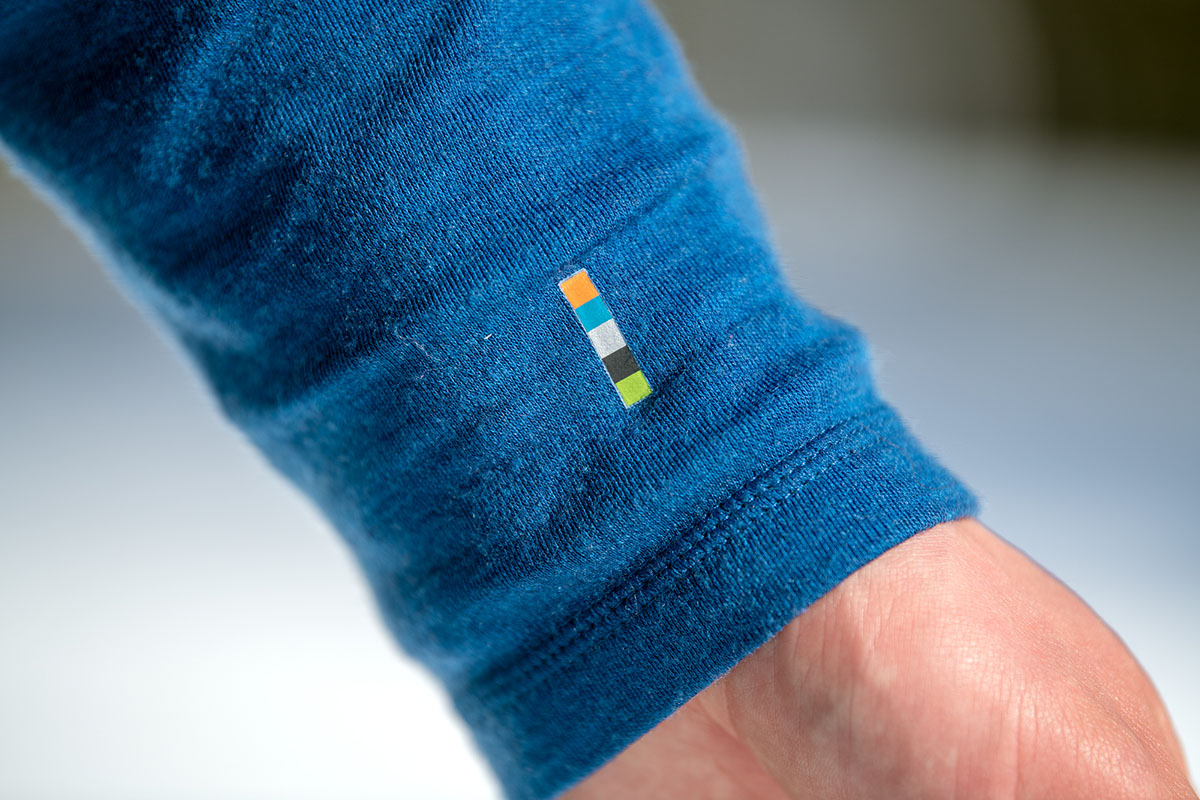
Durability
Here is where the tide changes: Merino is super soft but prone to developing small holes over time that eventually hamper the performance of the product, whereas synthetics should last for multiple seasons. To put this in perspective, we usually get a season or two out of a standard lightweight merino baselayer, even from the top brands, and by following their washing instructions (cold water and line dry). Admittedly, these shirts get a lot of use, but that’s still a very short lifespan. But with synthetics, one or two seasons would be on the short end of the spectrum, and we would hope for more like three or four.
Some companies are blending wool and synthetics to increase the strength of the baselayer without compromising next-to-skin comfort, which is a good idea in our opinion. We haven’t noticed much of a drop in terms of comfort or performance, but merino/synthetic blends are a step up in durability. Even so, if we’re wearing a baselayer without anything overtop, we’ll always opt for a fully synthetic piece such as the NW Alpine Black Spider Hoody.
Polyester: Excellent
Blends: Very good
Merino: Not good
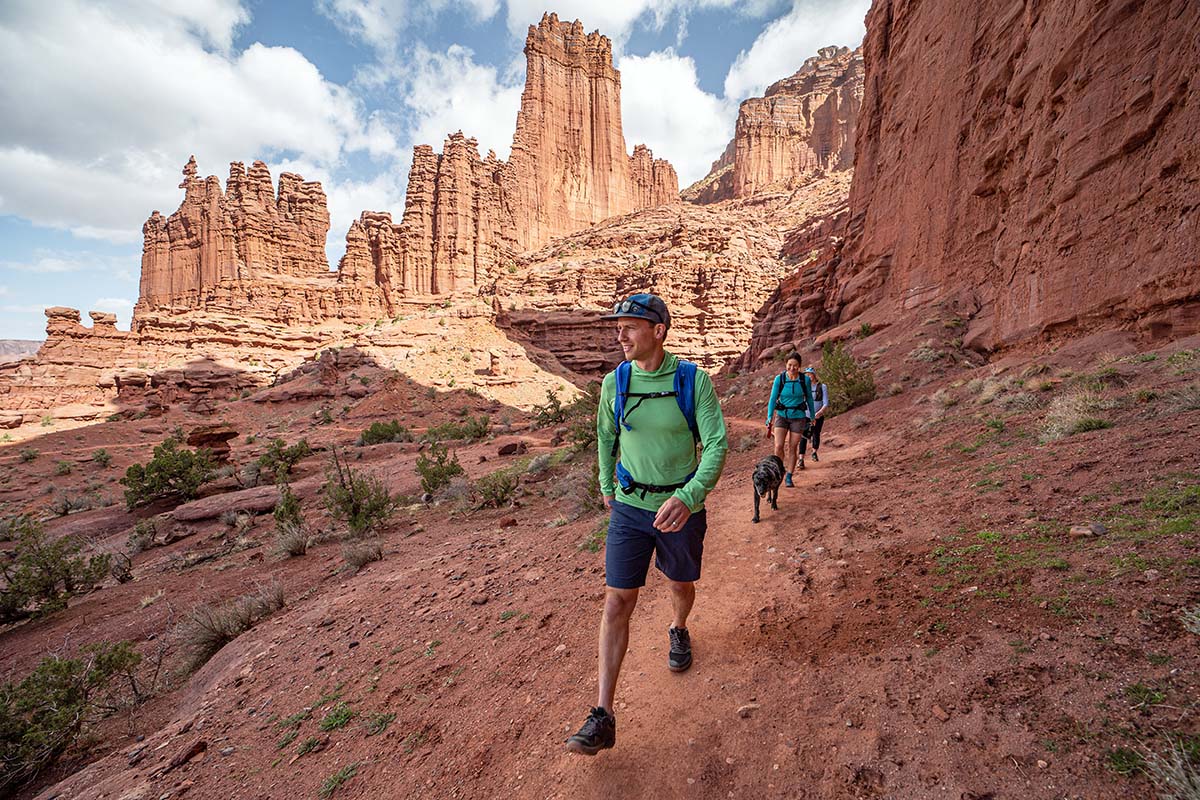
Warmth
Out of all the fabrics we’ve mentioned, merino has the best heat-trapping properties. In terms of the amount of warmth you get for the weight, it far exceeds polyester or nylon. However, if you plan to wear your baselayer as an outer layer, the roles are reversed: Merino doesn’t do much to block wind, while some polyester fabrics (such as Arc'teryx's Rho Heavyweight) are so tightly woven that they have the ability to resist light gusts. And keep in mind that warmth is directly related to the thickness of the material too, which we discuss in the "Insulation Weight" section below.
Merino: Excellent
Blends: Very good
Polyester: Good
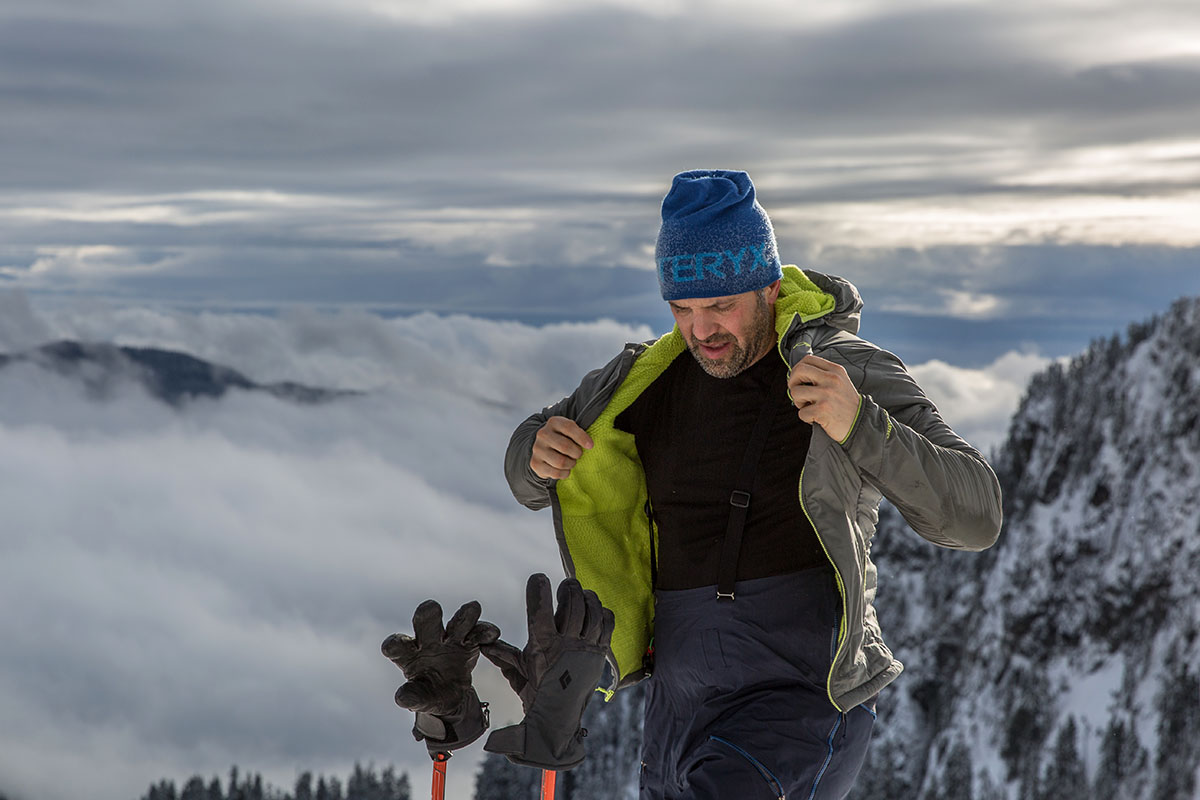
Lightweight
Logically, lightweight baselayers are the best breathers but do the least toward keeping you warm, making them ideal for spring skiing, bluebird days, and high-output activities such as nordic skiing and cold-weather running. That said, even thin merino wool baselayers can be very warm for their weight, so you’ll want to keep this in mind depending on your use. What’s more, the thinner the merino, the less durable it becomes; for this reason, most lightweight baselayers are made of polyester. One of our favorite lightweight offerings is the Outdoor Research Echo Hoodie, which we’ll even wear as a sun protection shirt during the summer months. If you’re looking for mid-winter warmth, it’s worth bumping up to a midweight baselayer.
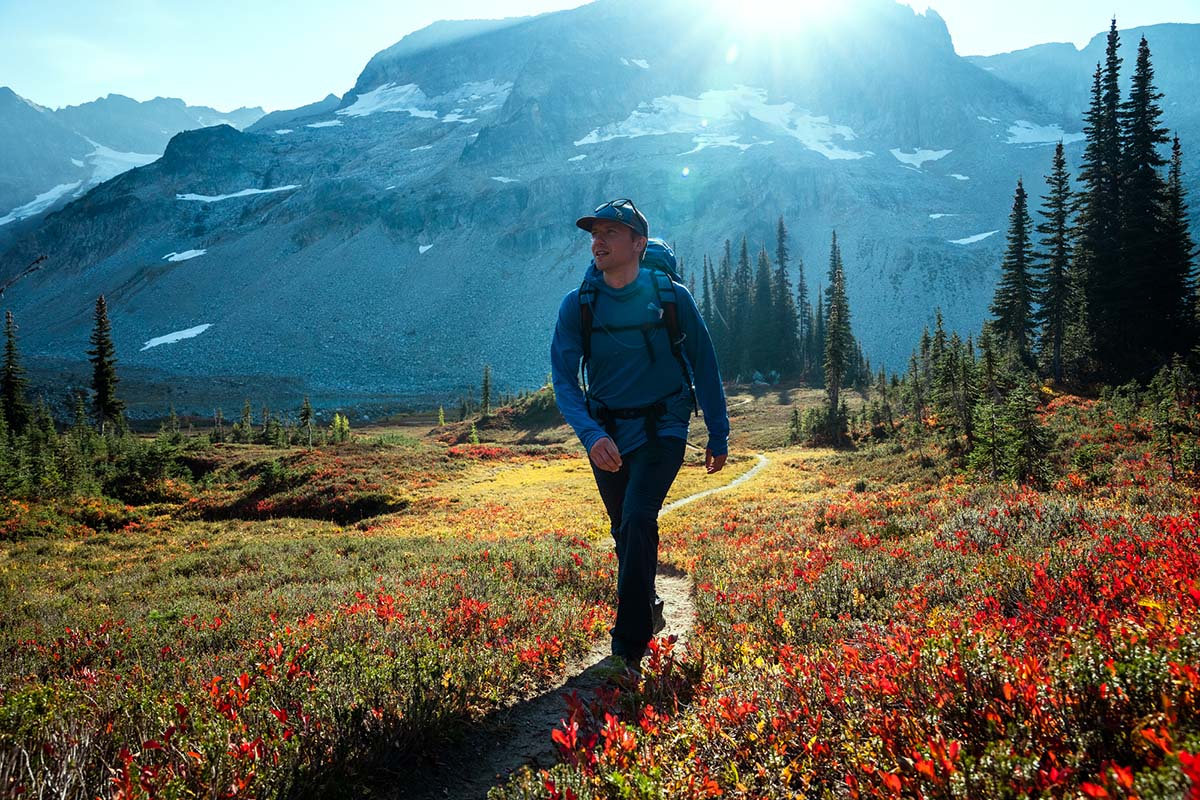
Midweight
For the widest variety of conditions, a midweight baselayer makes the most sense. It will provide the warmth you need yet still be breathable enough for physical exertion, especially when made with high-quality merino or polyester. Midweight baselayers are the most popular choice for downhill skiers: They’re plenty warm for the lift ride up, but you are unlikely to overheat on the descent. They are less popular than lightweight baselayers for hiking or ski touring in moderate conditions, as the extra warmth corresponds with a drop in the fabric’s ability to regulate temperatures (even merino can get too hot in warm temperatures). But in cool spring and fall conditions, a midweight baselayer can perform great as an outer layer and is the ideal next-to-skin layer for resort skiing on cold days.
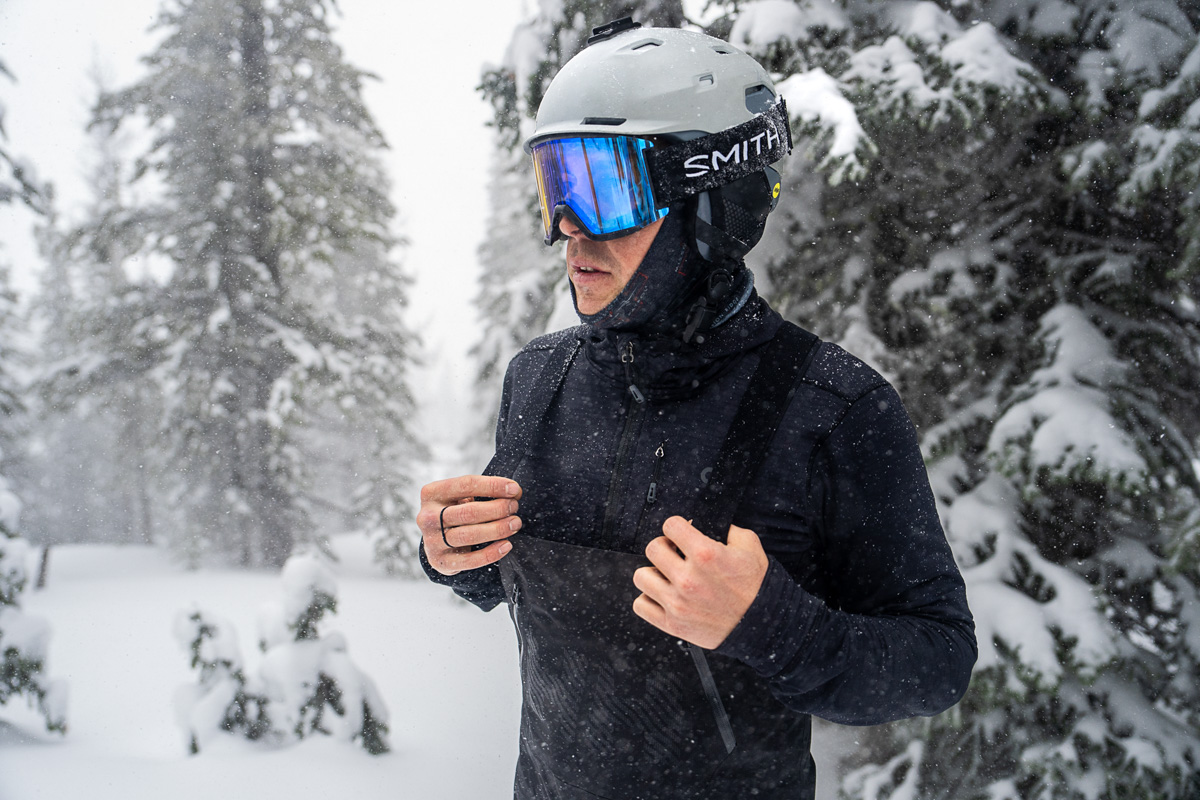
Heavyweight
Heavyweight baselayers are specialty items for cold temperatures or if you’ll be relatively sedentary. The extra thickness inhibits breathability, and it’s easy to start sweating even on short walks. Keep in mind that you don’t need all of your insulation from a single article of clothing, and as a result, you can always add warmer layers on top of a light or midweight baselayer. But for winter mountaineering, extreme cold, or low-output activities around camp, a heavyweight baselayer can be the height of coziness. If you do go this route, we've found that the Arc'teryx Rho Heavyweight offers a great combination of winter-ready warmth and breathability.
Manufacturers list the weight of a baselayer's fabric in terms of grams per square meter (g/m², or gsm), which provides a good idea of how much warmth the baselayer will provide. From our picks above, these weights range from 125g/m² for the Helly Hansen Lifa Stripe Crew to 250g/m² for the Smartwool Classic Thermal 1/4 Zip (keep in mind that not every manufacturer reports this spec). On the low end, the Lifa Stripe and TNF Summit Series Pro (132g/m²) are great pairings for mild conditions and high-output activities, while offerings like the Classic Thermal will be overkill for everything but deep winter. However, it's important to note that fabric weight does not always perfectly align with warmth due to variations in fit and material (1g merino wool generally offers more warmth than 1g polyester). For example, the all-merino Icebreaker ZoneKnit is slightly warmer than Smartwool’s Intraknit Thermal (both are 200 g/m²), which uses a blend of 53% merino, 45% polyester, and 2% elastane.
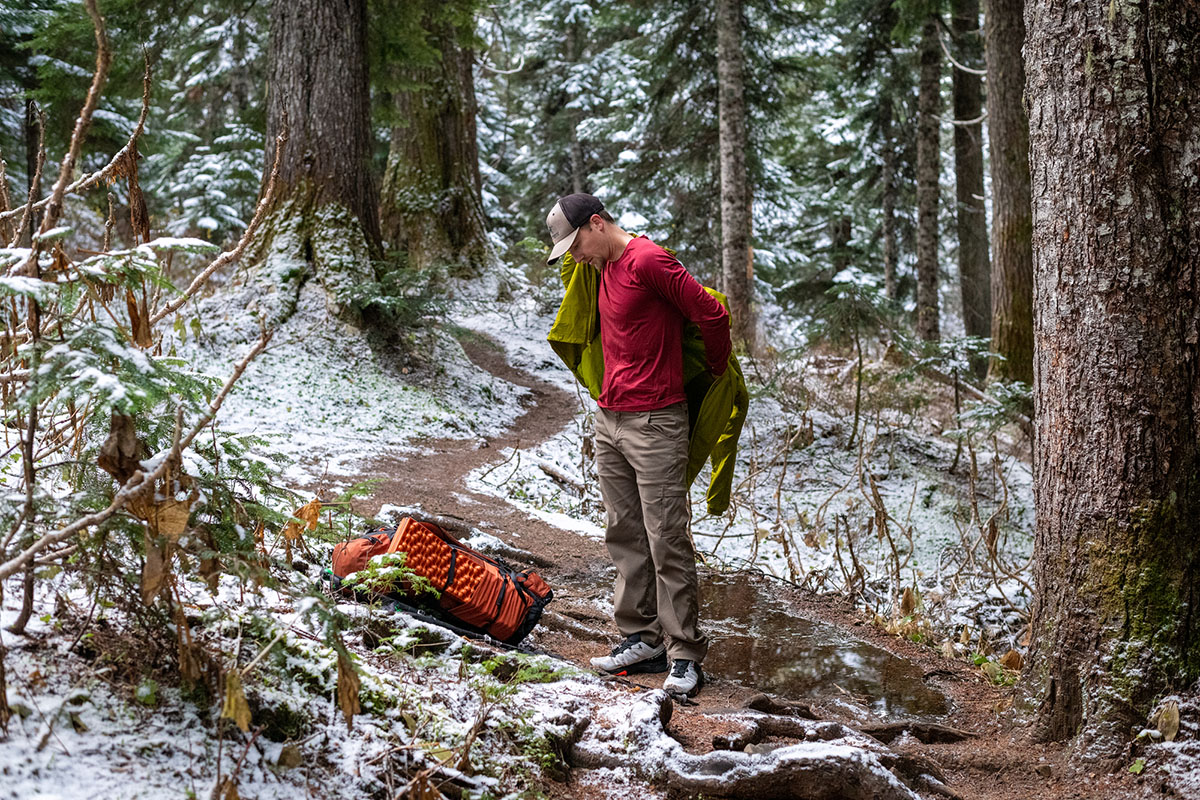
Nearly every baselayer on the market is made in a number of styles, including long-sleeve crew and half/quarter-length zippered shirts. Many folks opt for a crewneck style, but there are a number of reasons to think about a zippered shirt. One upside is the ability to adapt to changing weather conditions. Zip up for added warmth at the start of the climb, and unzip as you work up a sweat. And if you want to remove the shirt altogether, it’s nice not having to take off your helmet to do so. Furthermore, the extra coverage you get with the raised collar is a nice boost in warmth, and we’ve even found that quarter or half-zip long sleeves have a decent look for around town. The downside is that the collars can flop around if you unzip the shirts while running, and having a zipper on your next-to-skin layer isn’t as comfortable as the cleaner crew style.

For optimal performance, baselayers need to have a snug fit. This helps the fabrics draw moisture away from your skin most efficiently. Some folks like wearing their baselayers for casual use, and that’s when a dedicated performance product like the Smartwool Intraknit Thermal is less useful. The shirt conforms to your body like a performance piece should, but it’s far too tight to wear anywhere else. A product like the REI Co-op Merino 185 Half-Zip is on the opposite end of the spectrum, with a roomier fit that sacrifices a little in moisture-wicking and breathability. But it’s a great choice for those who prefer a dual-use baselayer/casual shirt. In the end, your decision is a personal one, and we recommend looking at fit based on intended use and preferences on style.
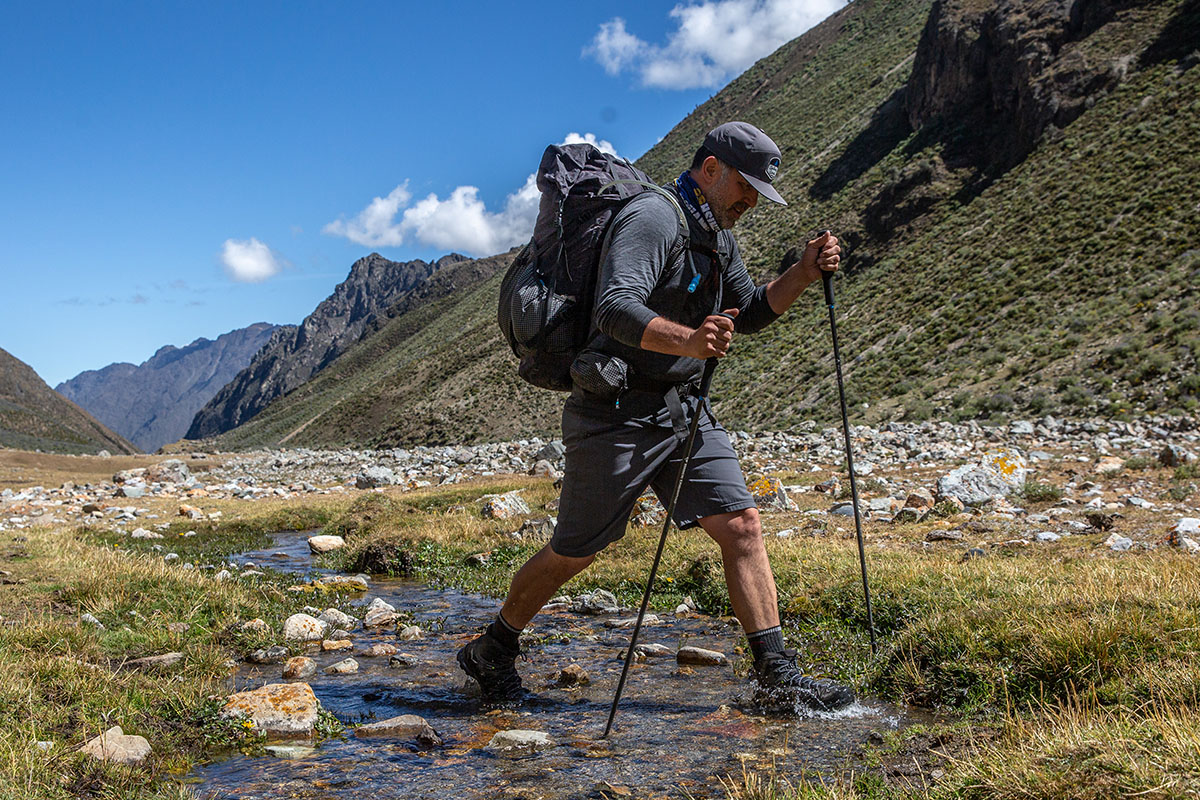
Baselayers can range from simple, featureless crew tops like the Patagonia Capilene Midweight Crew to hooded half-zips with a chest pocket (the NW Alpine Black Spider Hoody, for example). If you know you’ll be layering a mid or outer layer over your baselayer, the simpler the better. However, those who wear their baselayer as an outer layer will appreciate zip pockets and thumb loops. And climbers and skiers will benefit from a tight hood or balaclava that fits under their helmet, like what you get with the NW Alpine Black Spider Hoody. Furthermore, some baselayers even have the capability of blocking sun rays (measured by the UPF rating). As usual, it will help to identify what you’ll be using your baselayer for before determining what features you need.
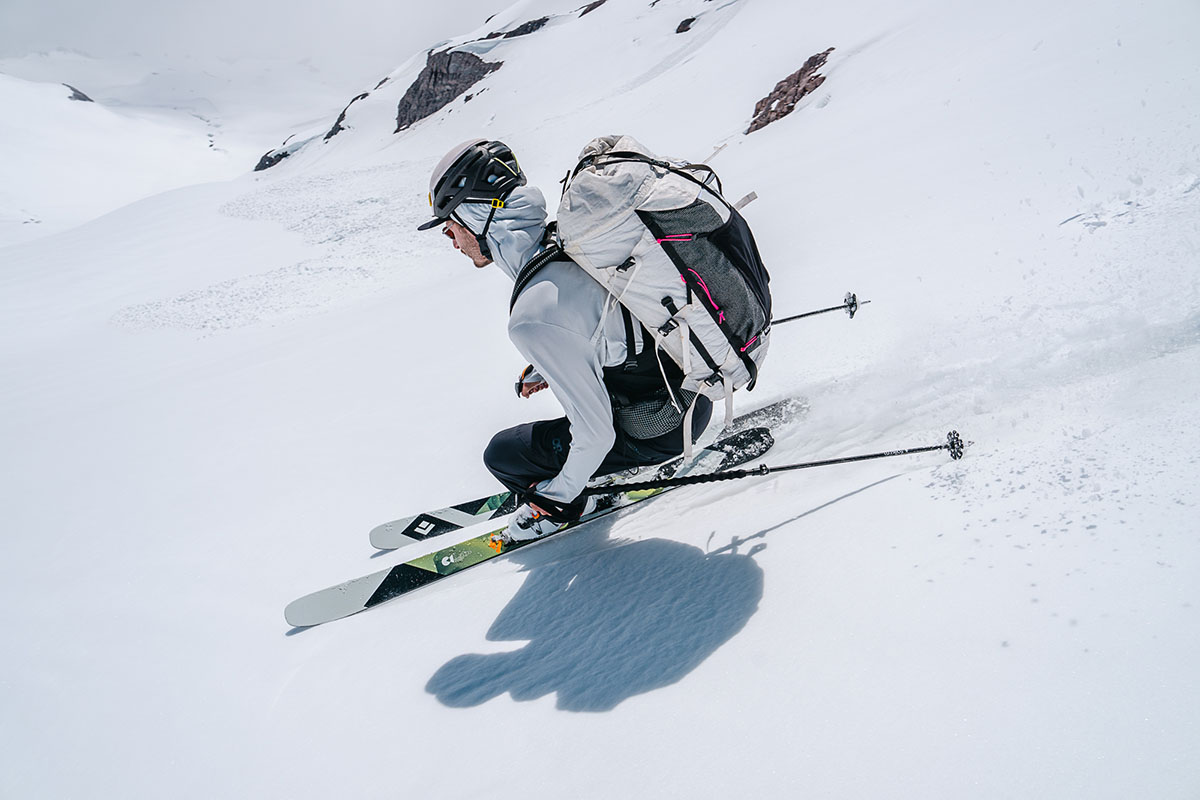
The focus on sustainability has been increasing in the outdoor industry over the past several years, and baselayers are no exception. In this category, there are currently two key trends: responsibly sourced wool and the use of recycled synthetic materials. The former can mean a couple of things. For one, certifications like the Responsible Wool Standard and ZQ-certified wool indicate that sheep were treated humanely and in accordance with strict animal welfare and environmental standards. Some brands are also prioritizing a transparent and local supply chain. We’ve also begun to see more companies utilizing recycled materials, which cuts down on fossil fuel consumption and reduces the amount of plastics being produced overall. All in all, we appreciate these efforts and are eager to see more brands come on board.
Most baselayers on this list have a matching bottom with the same construction and a similar or identical price. For the sake of organization, we list the tops here as they are more popular, but the bottoms are readily available and share the same pros and cons. In general though, maintaining a warm core will do much more for your entire body’s comfort than keeping your legs warm. But given that there’s no need to choose—and provided that almost nothing is cozier than a pair of long johns—we’re huge proponents of baselayer bottoms as well.
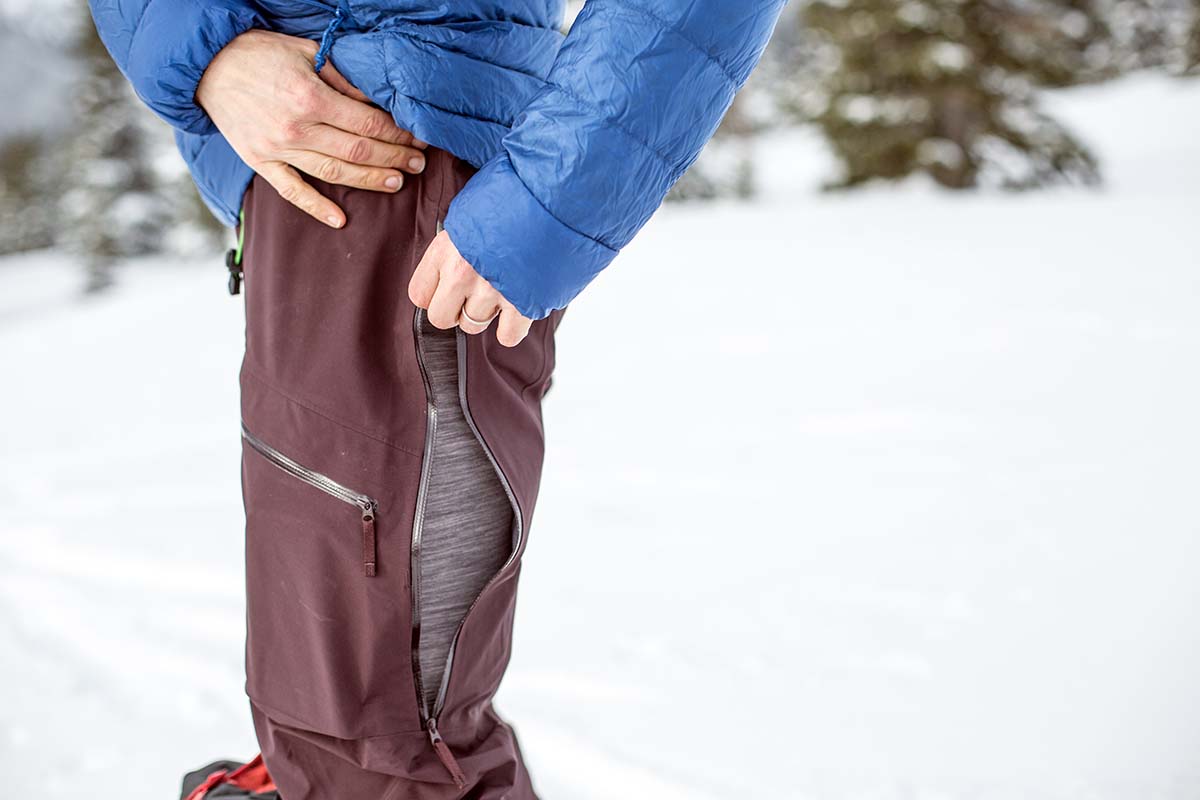
Caring properly for your baselayers can go a long way toward maximizing their lifespan, especially if you opt for an all-merino design. As with most wool products, we recommend washing merino baselayers in cold water and line drying. Directions vary by manufacturer, and some may claim that merino can be machine-dried, but we’ve found this can result in premature pilling and unwanted shrinkage. Another consideration is thickness: Thinner baselayers like the Smartwool Classic All-Season tend to break down quicker than thicker designs like their Classic Thermal, especially in high-wear areas like the cuffs and shoulders. Synthetics typically require less maintenance—just throw them in with your other laundry—but we’ve never felt overburdened by taking a little more care with our merino layers.
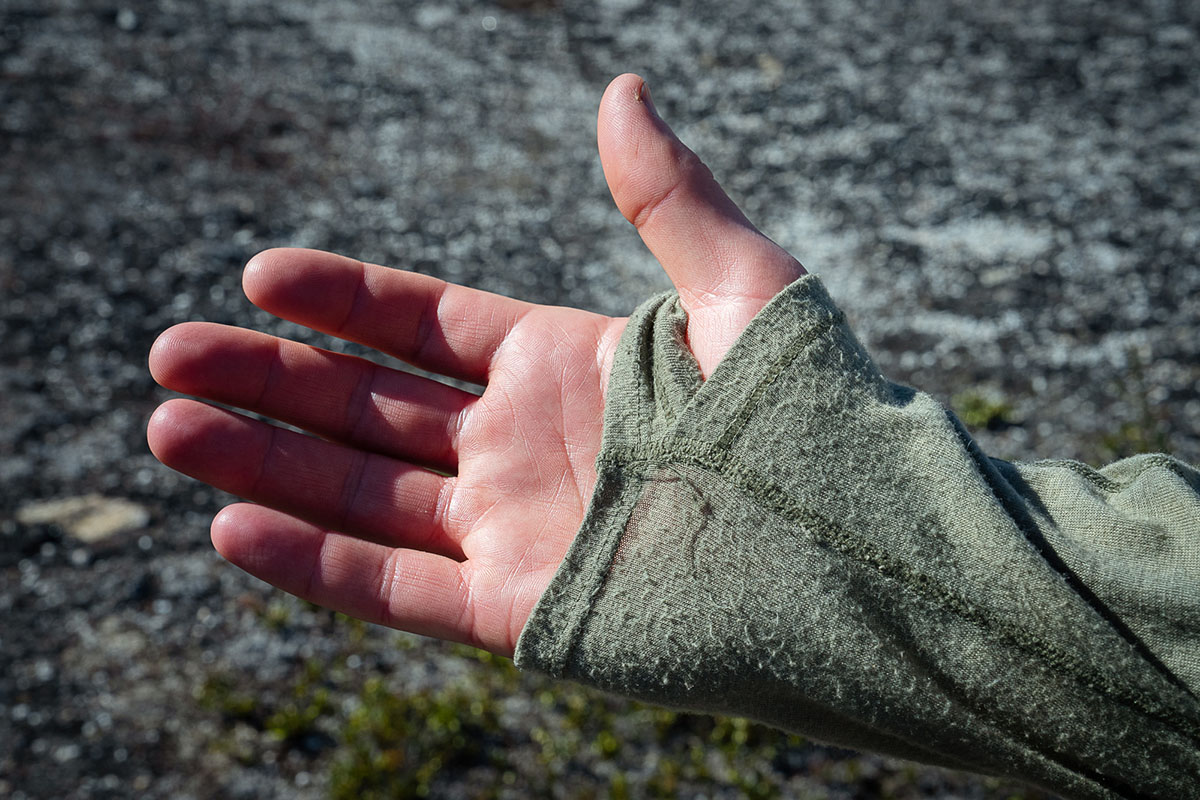
To get the most out of your technical clothing, it’s important to think of everything as a system. Each piece relies on the layers around it to perform well. As an example, if you have a baselayer that wicks moisture well, but are wearing a fully rubber mid or outer layer, it won’t matter how nice a merino fabric you have: You’ll still be wet and miserable. As such, take the time to put together mid and outer layers that are as high-performing as the baselayers listed above.
Baselayers
Baselayers have two primary functions: warmth and moisture wicking. Whether constructed with wool, polyester, or nylon, or a blend, a baselayer is made to retain your body’s heat while transporting moisture away from the skin. And these two features work together—keeping the body dry will in turn lead to more warmth. Baselayers are worn beneath a midlayer or shell during the winter months, or as an outer layer during the fall and spring for activities like hiking, biking, and climbing. The thickness and material of your baselayer will have a big impact on warmth and breathability, so make sure to keep this in mind when making a purchase.
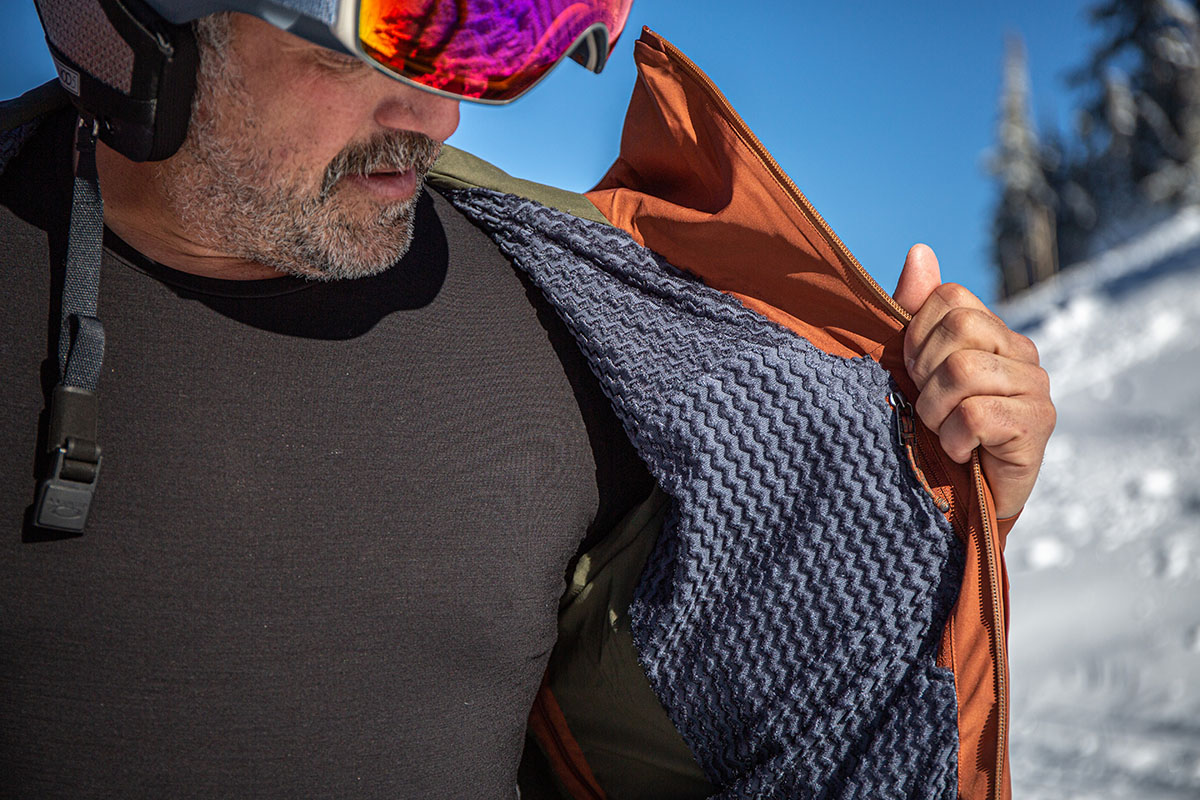
Midlayers
For high-output activities, such as hiking, backpacking, and climbing, breathability is top priority. We recommend a fleece jacket or synthetic jacket for balancing warmth and ventilation. High performers include the Arc’teryx Atom LT and the R line of fleeces from Patagonia. If you only plan to grab your insulating layer during downtimes, such as hanging around camp after the sun goes down, consider a warm and super packable down jacket. Skiing is a similar story, and conditions will dictate the best midlayer for you. Options can range from a puffy down jacket to a light fleece.
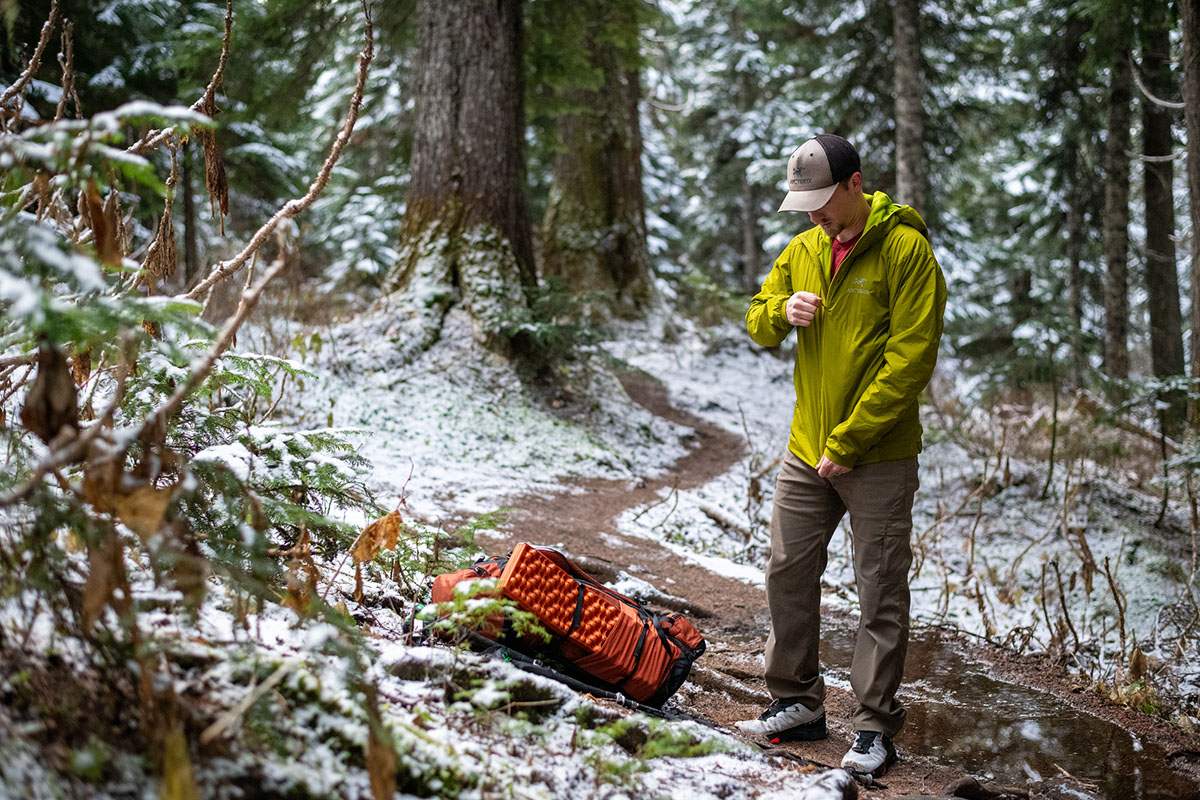
Outer Layers
Outer layers are the most specialized part of the system, and their complex designs can get quite pricey. A waterproof, breathable, and packable rain jacket is needed for activities like climbing and hiking/backpacking. Winter conditions are much harsher, so durability takes precedence for ski jackets. Their designs offer more pockets for storing gear or personal effects and a longer fit to protect you from snow sneaking through. There are also hardshell jackets that blur the lines, mixing the weight of a rain jacket with the performance (and extra cost) of a ski jacket.
Back to Our Top Men's Baselayer Picks Back to Our Men's Baselayer Comparison Table